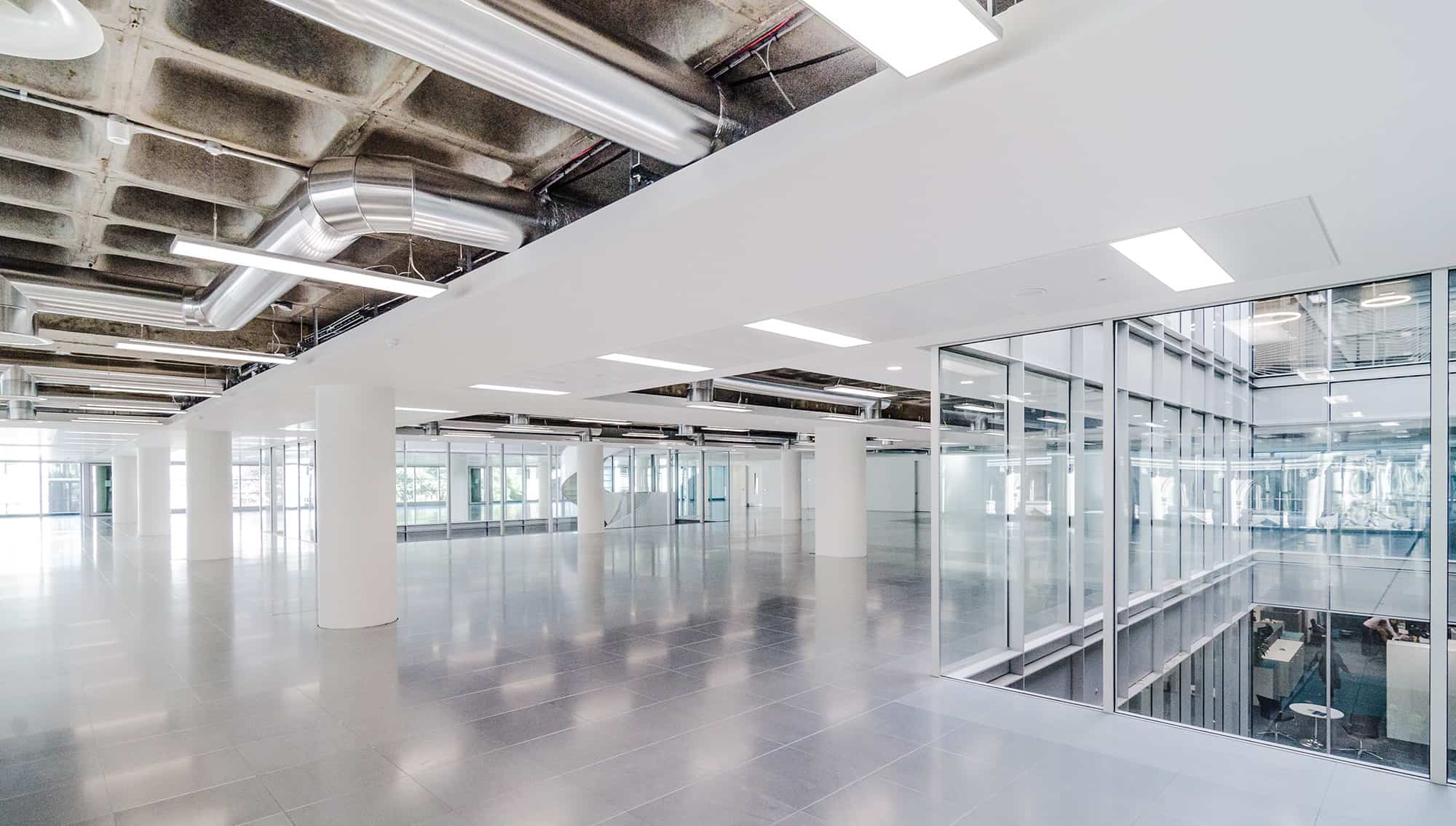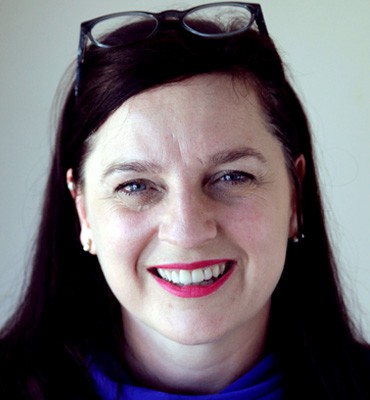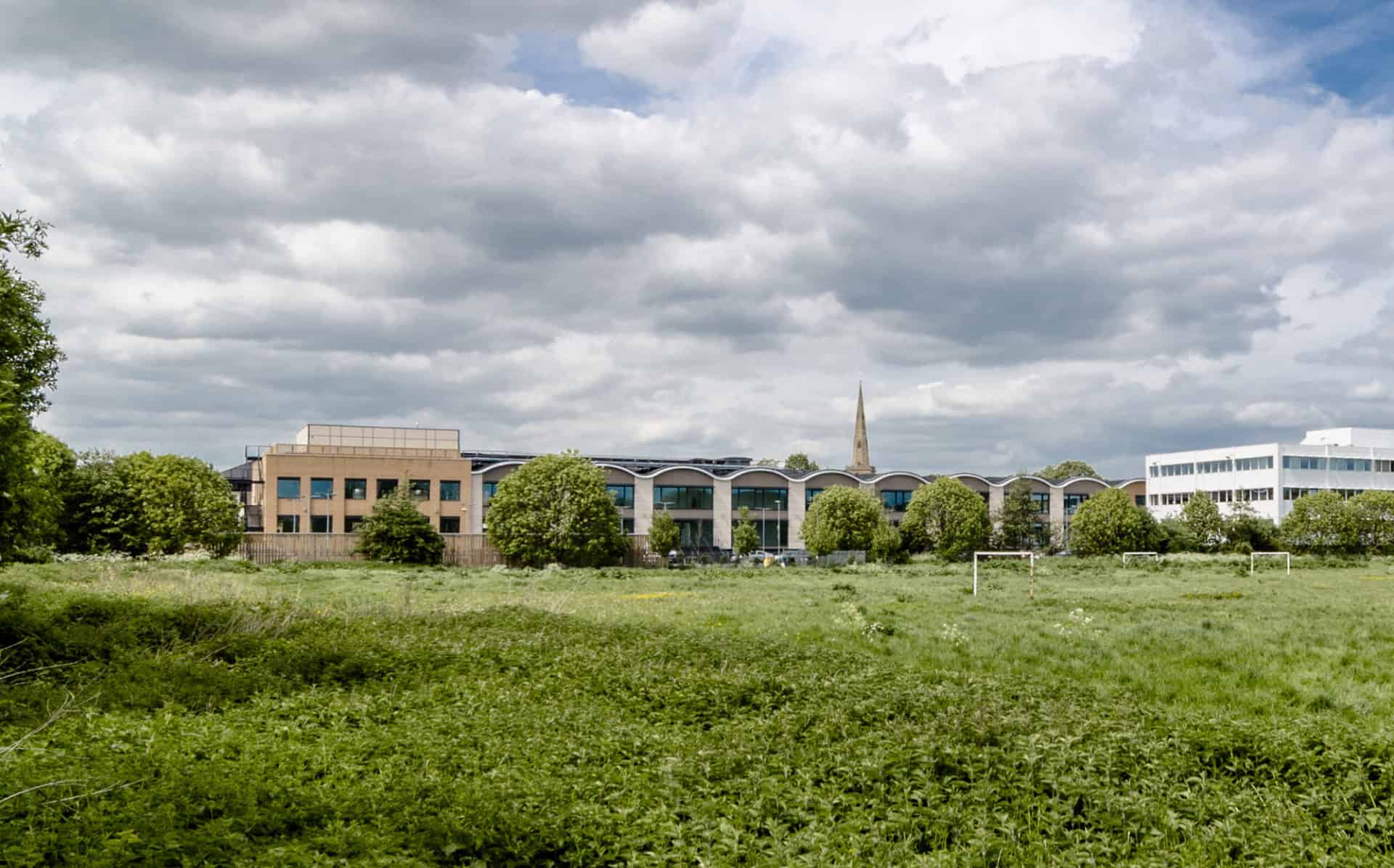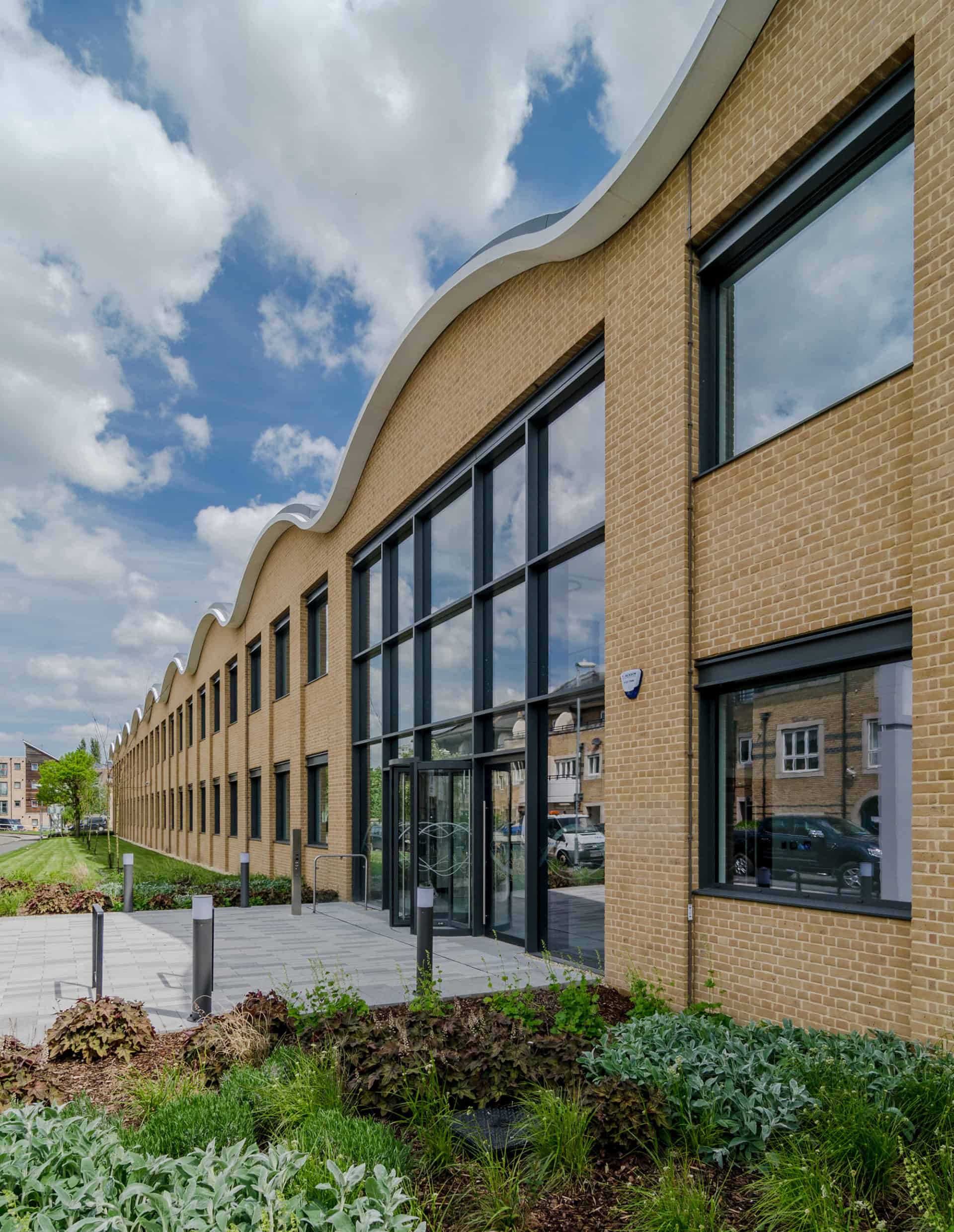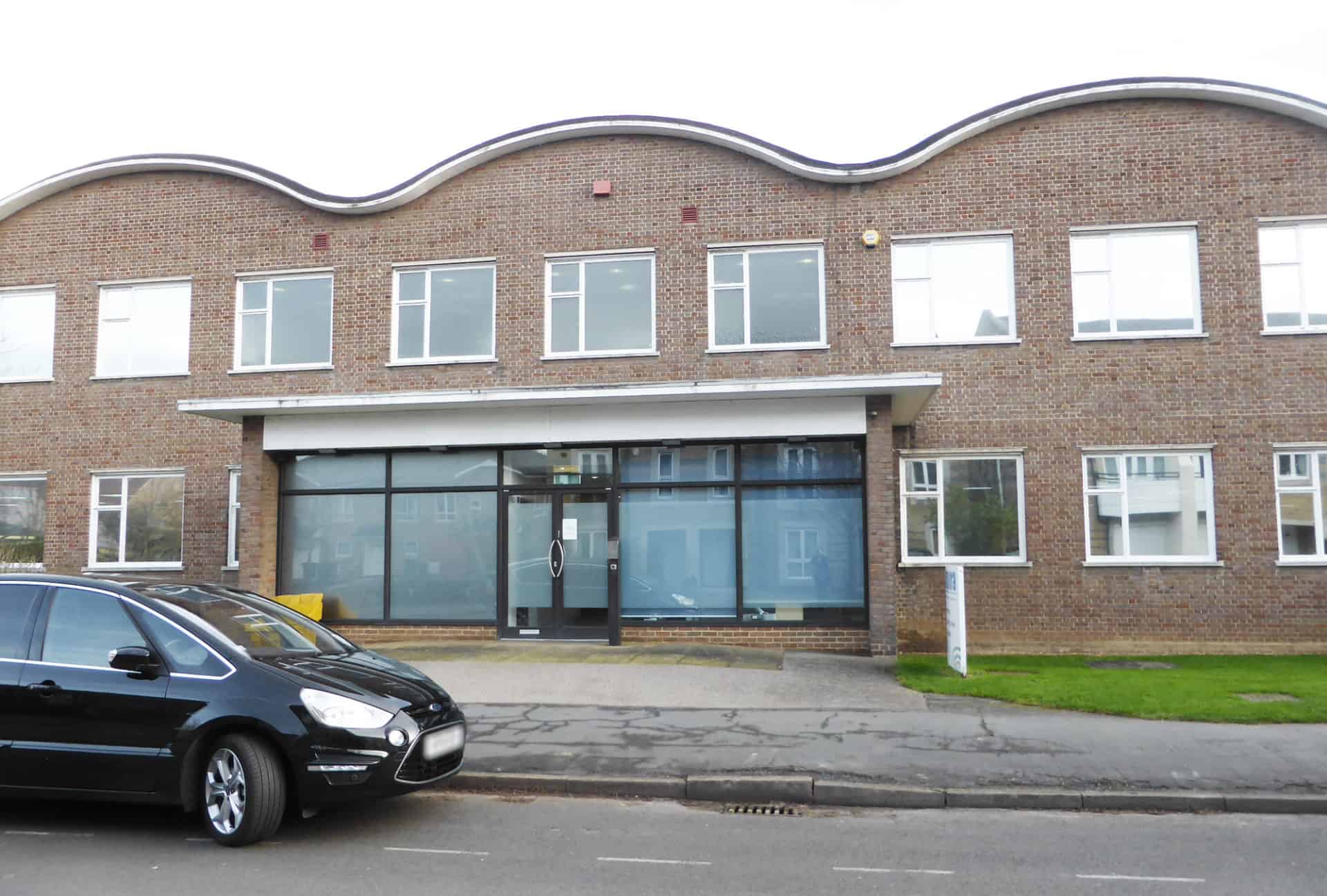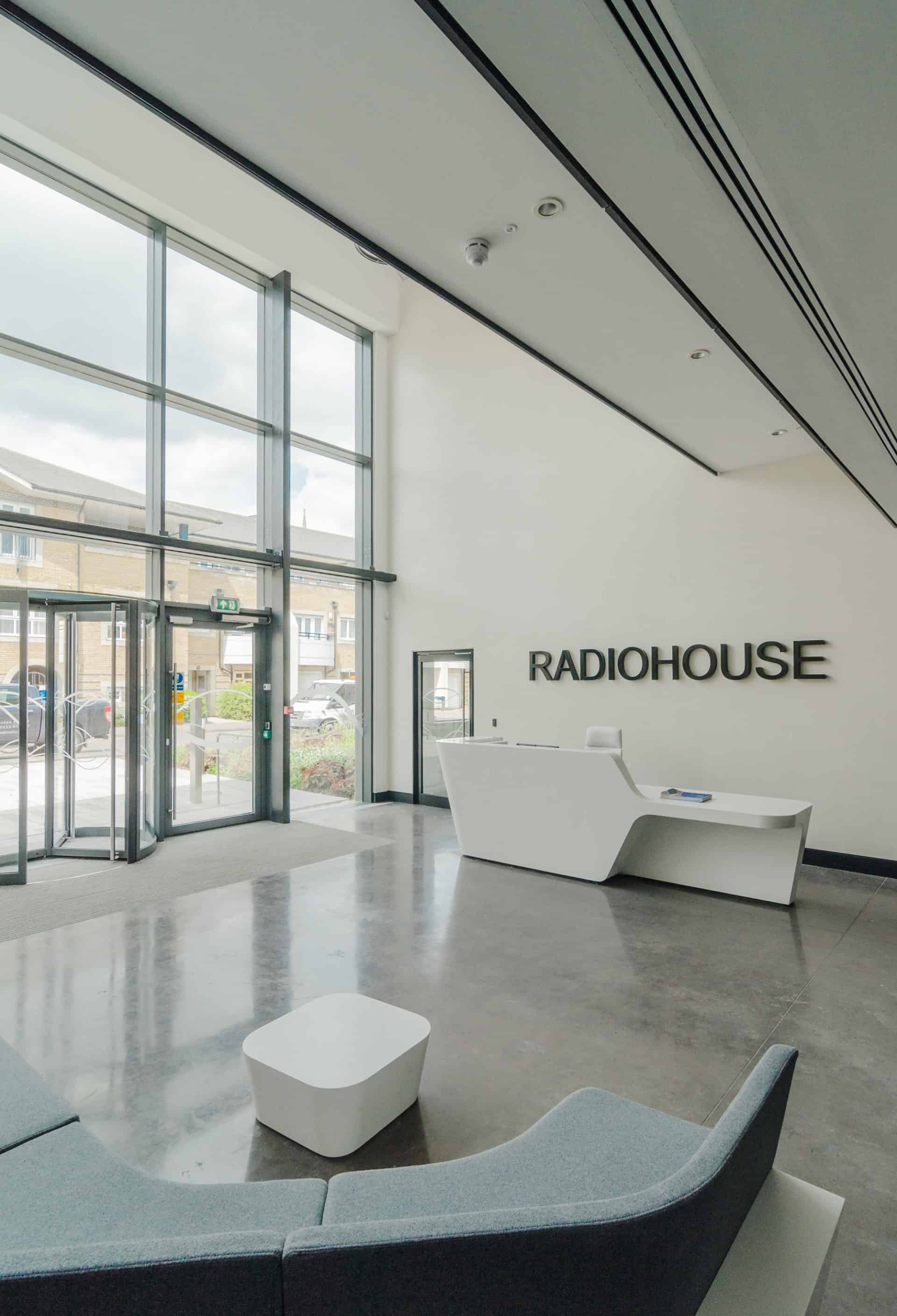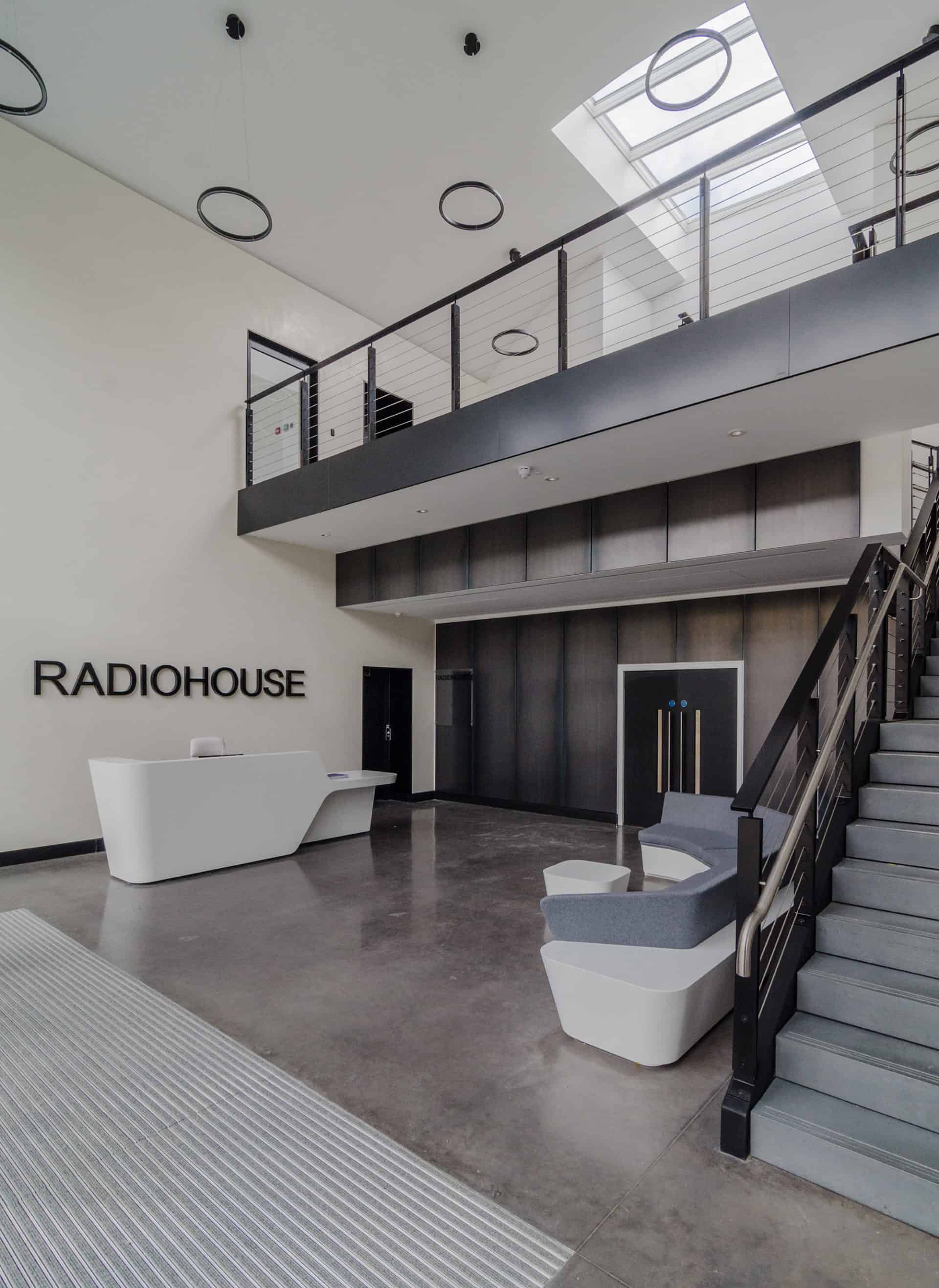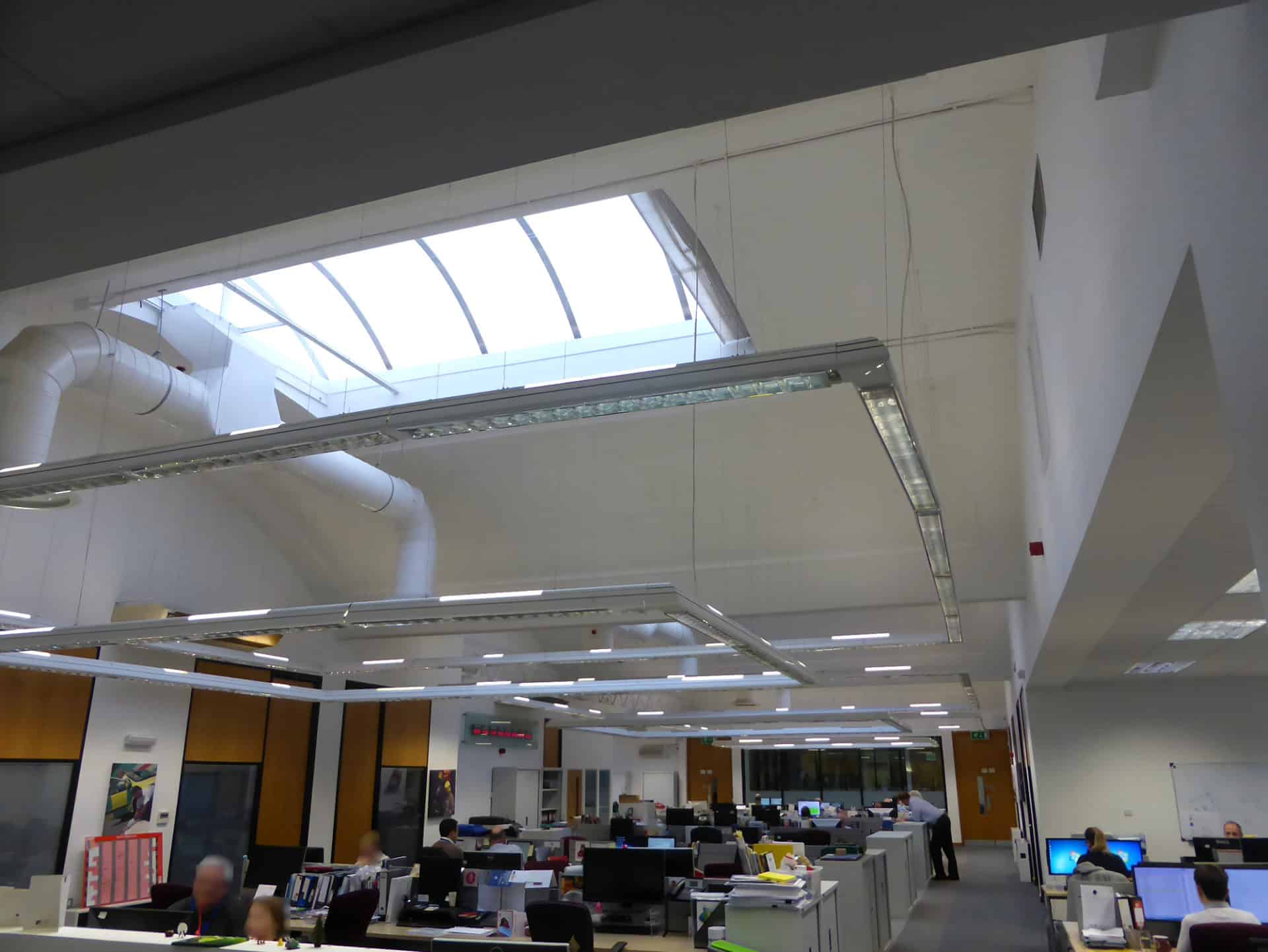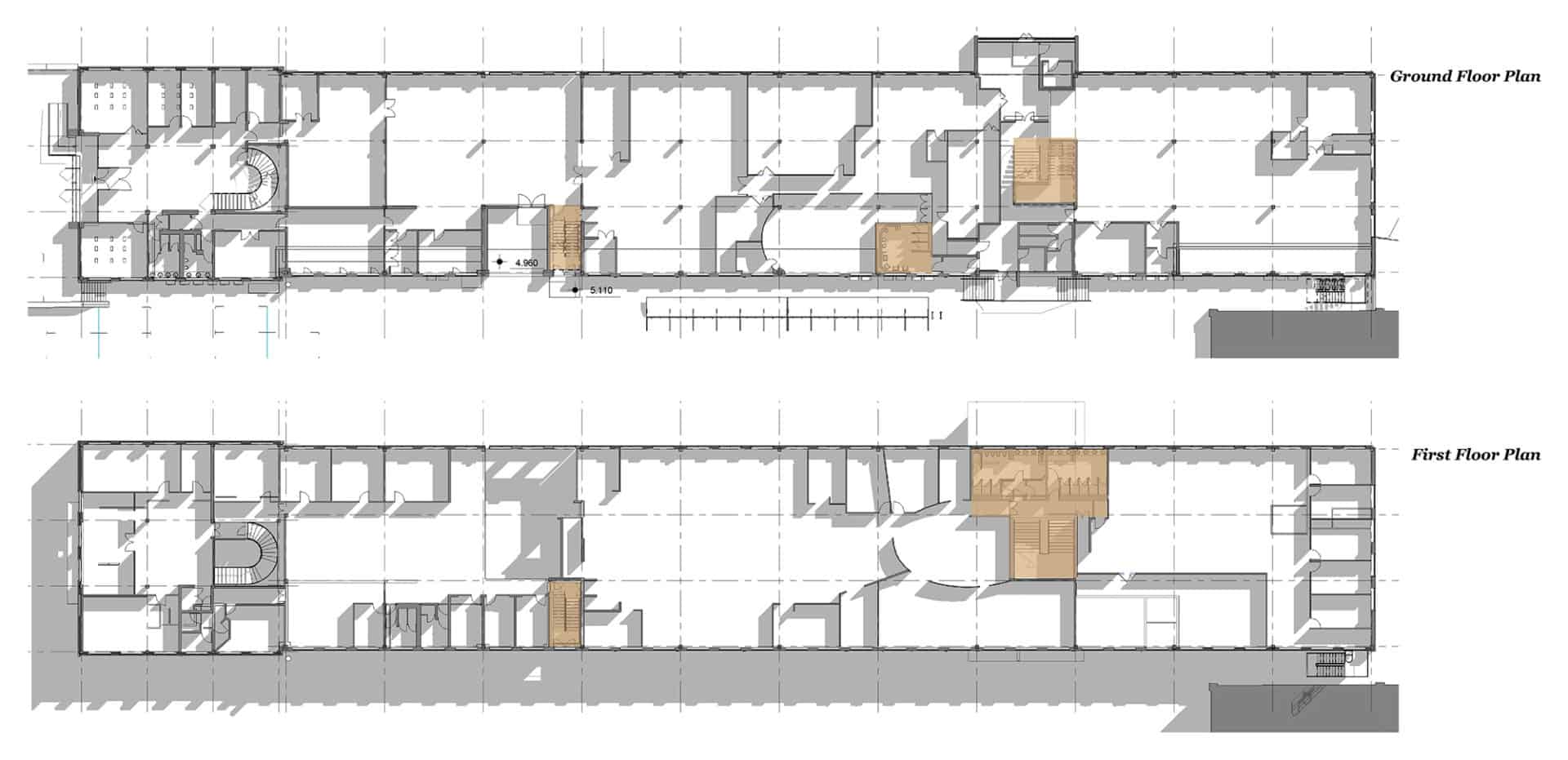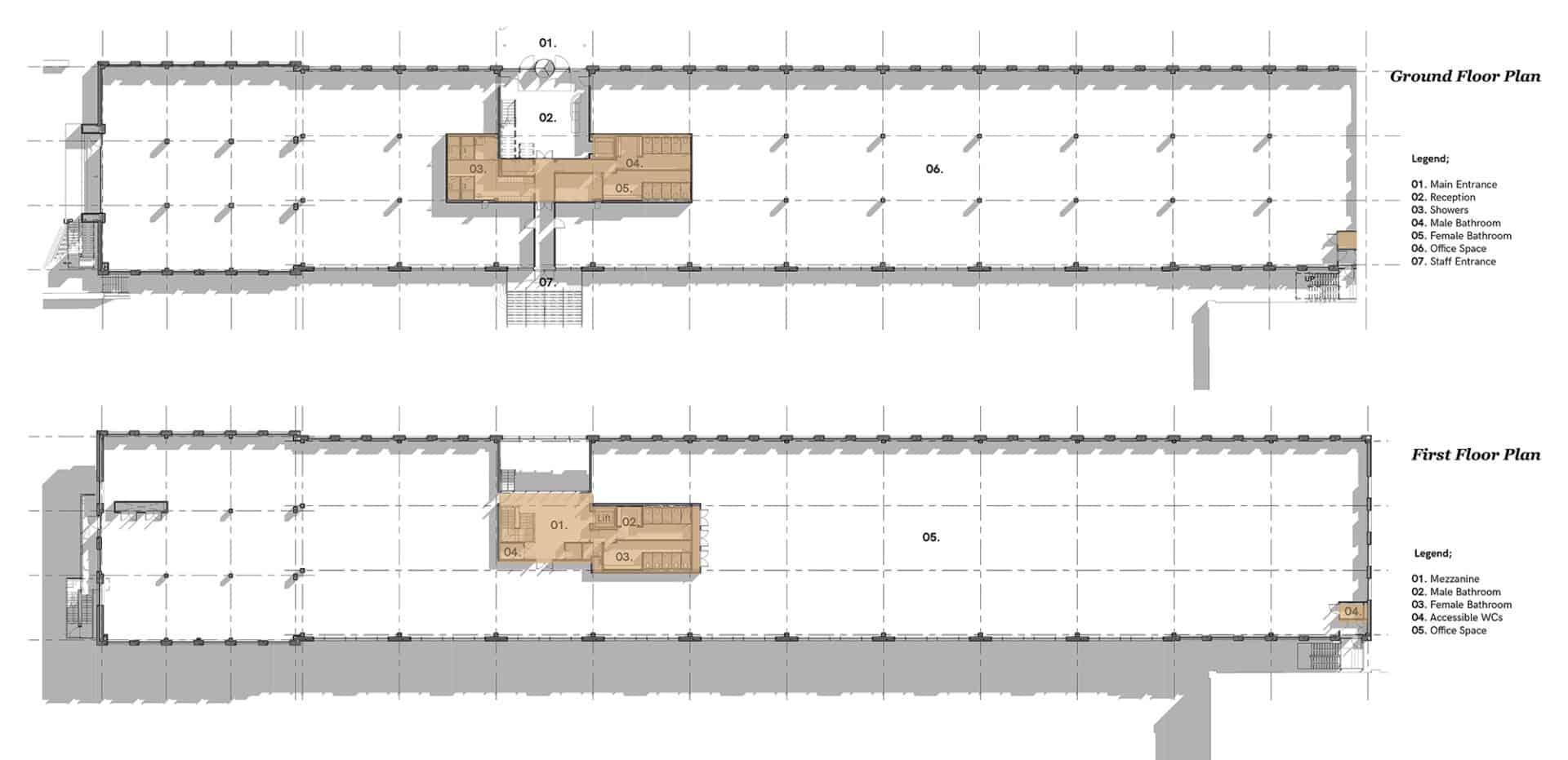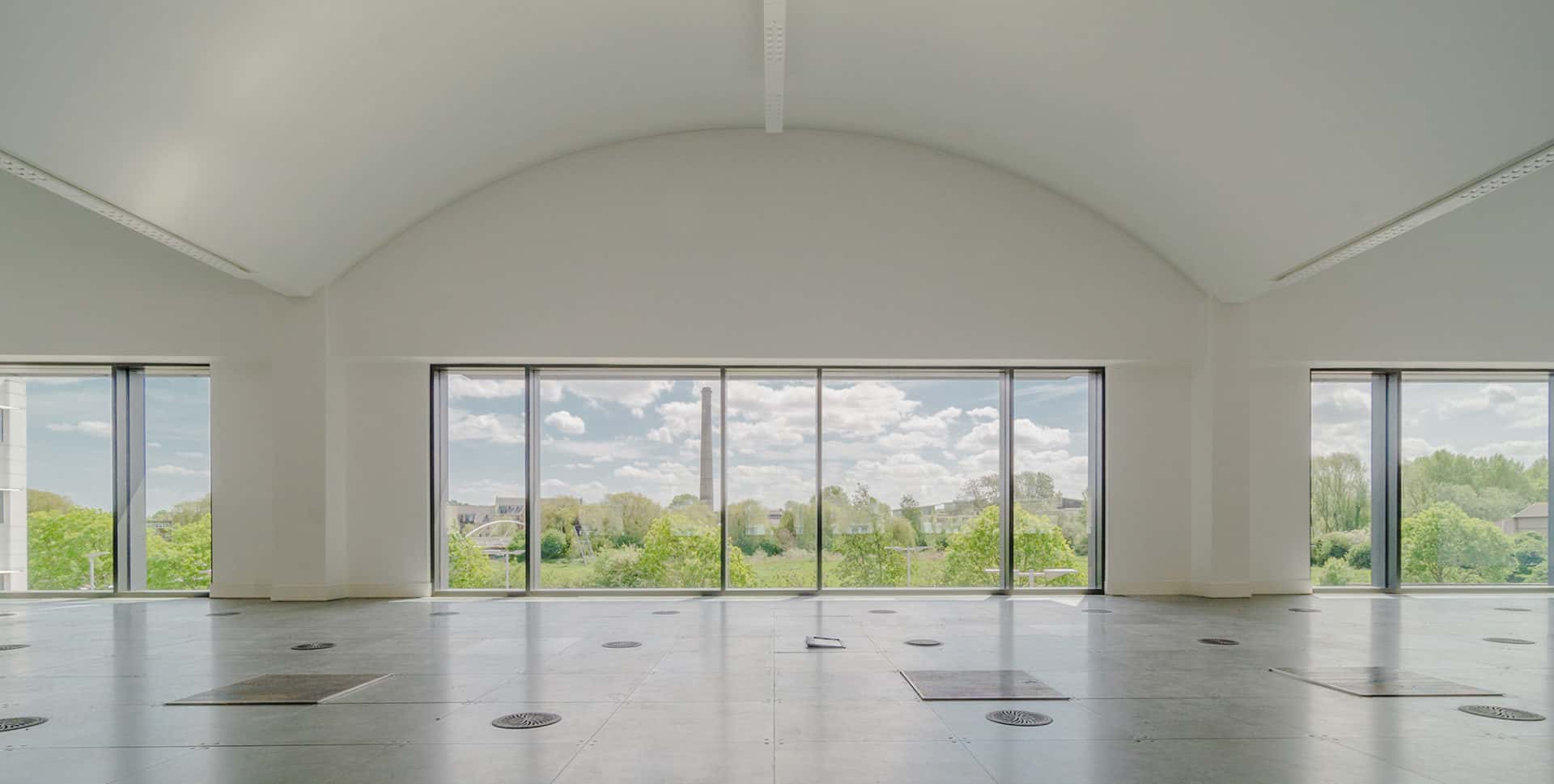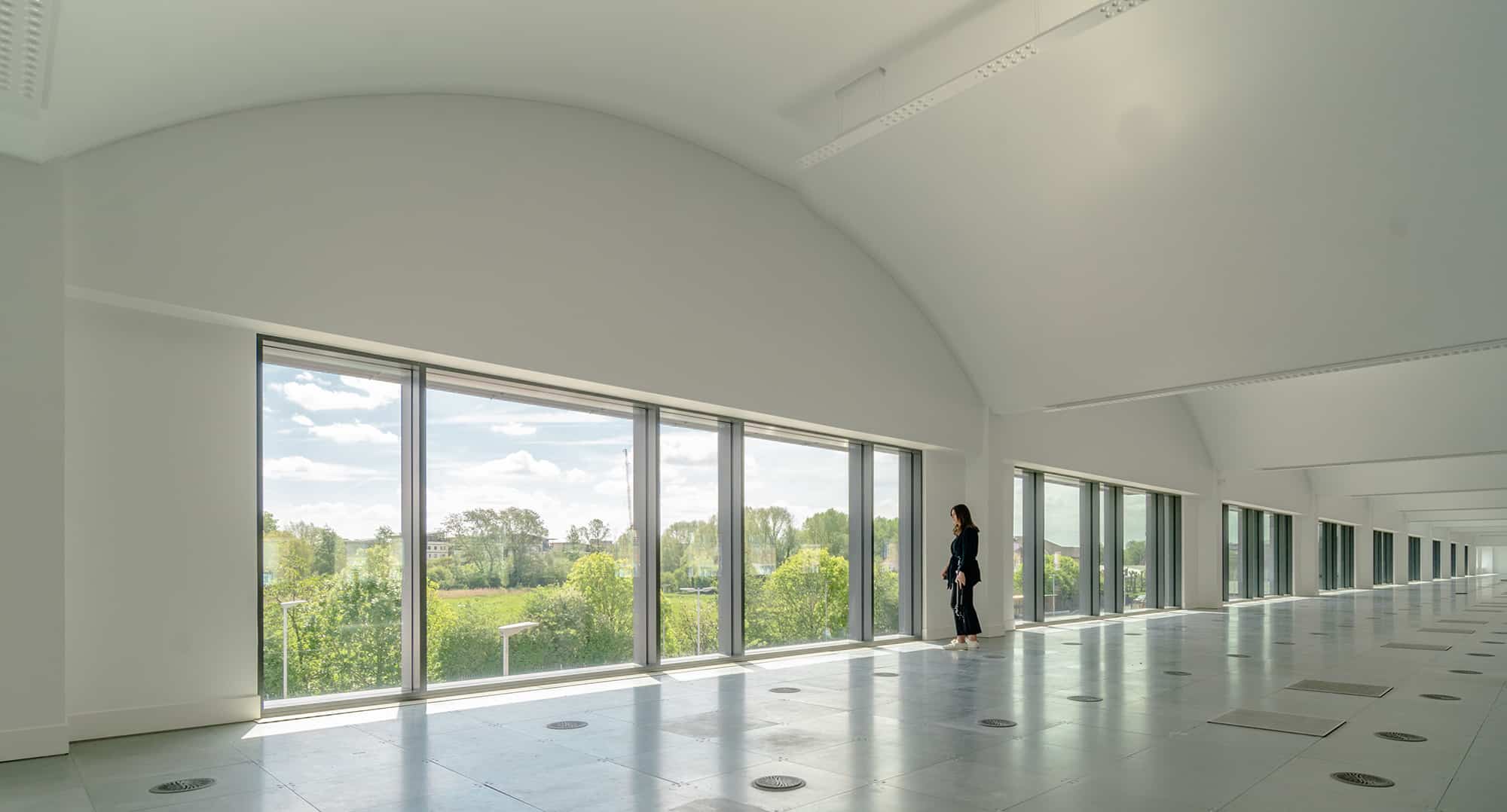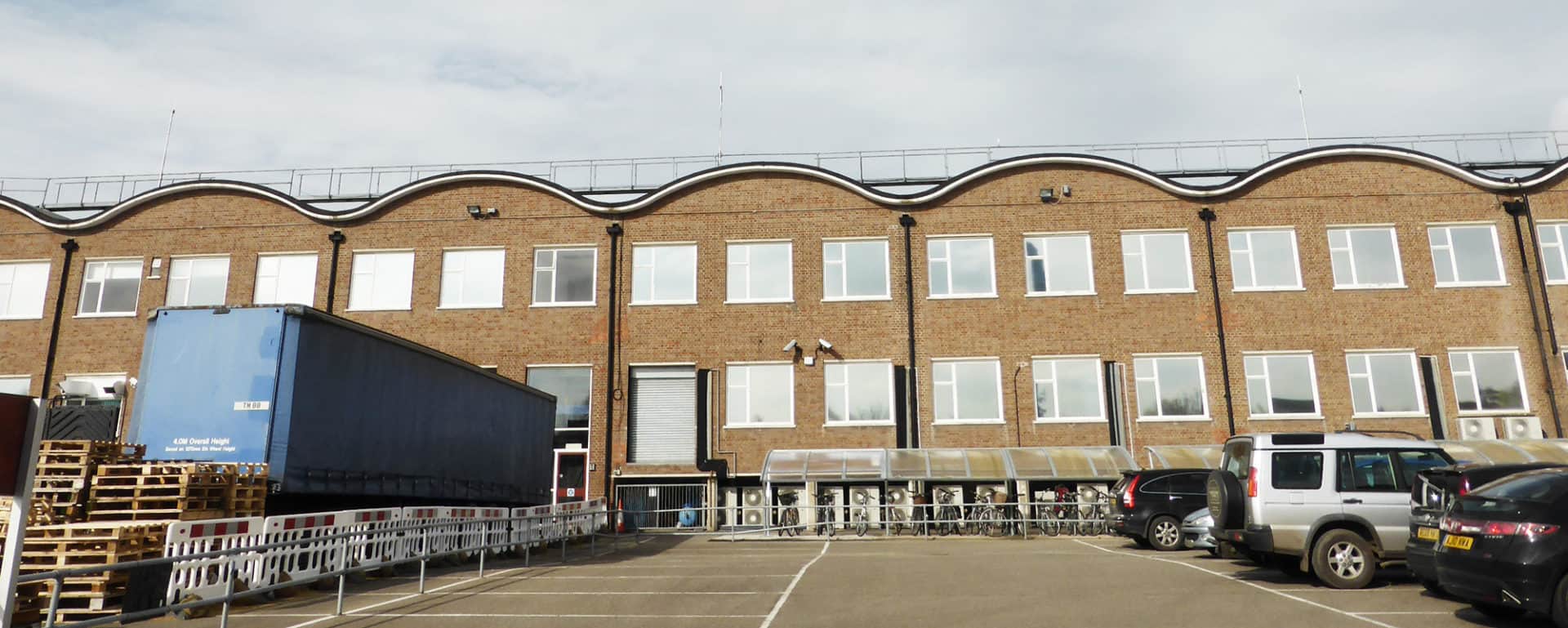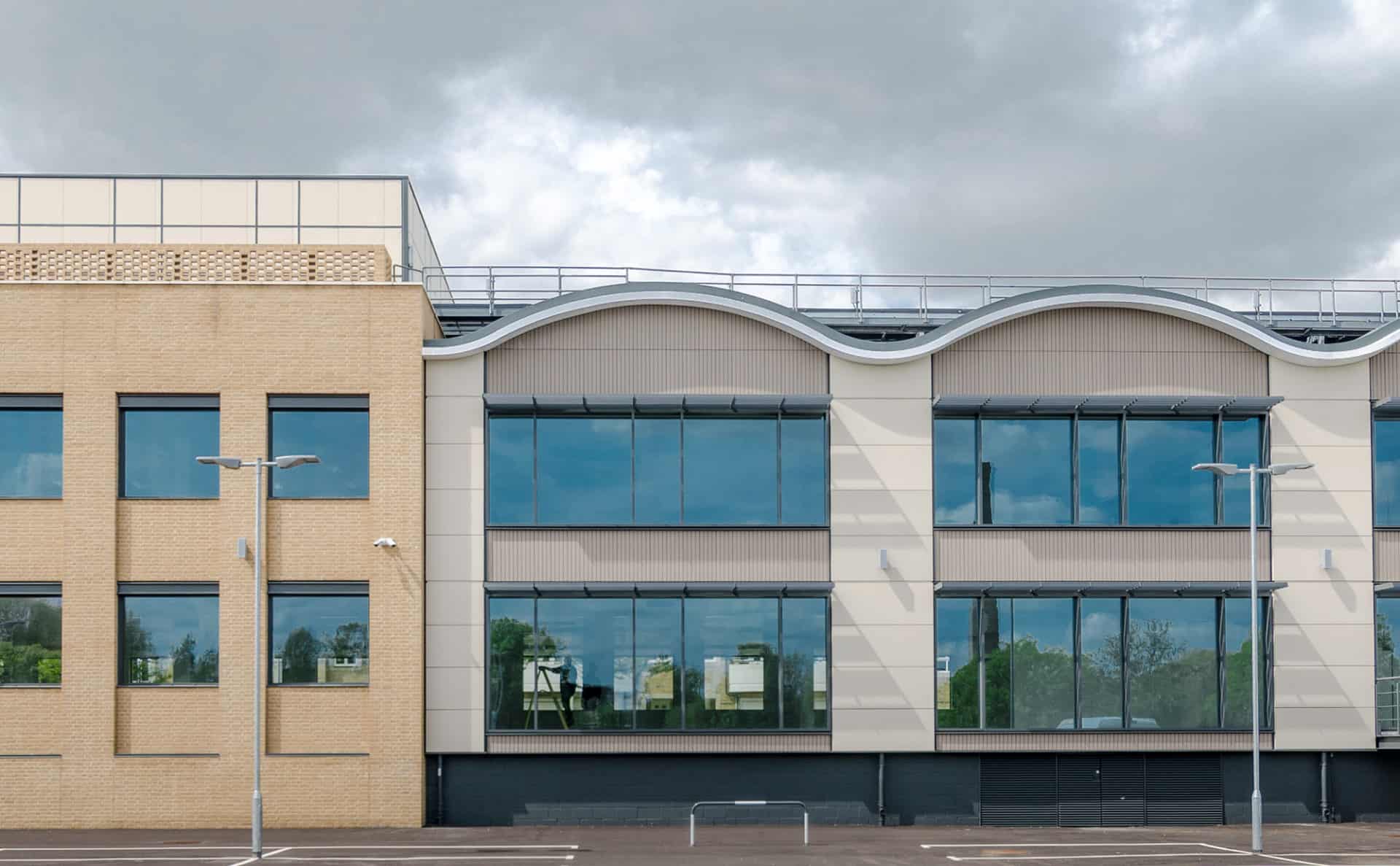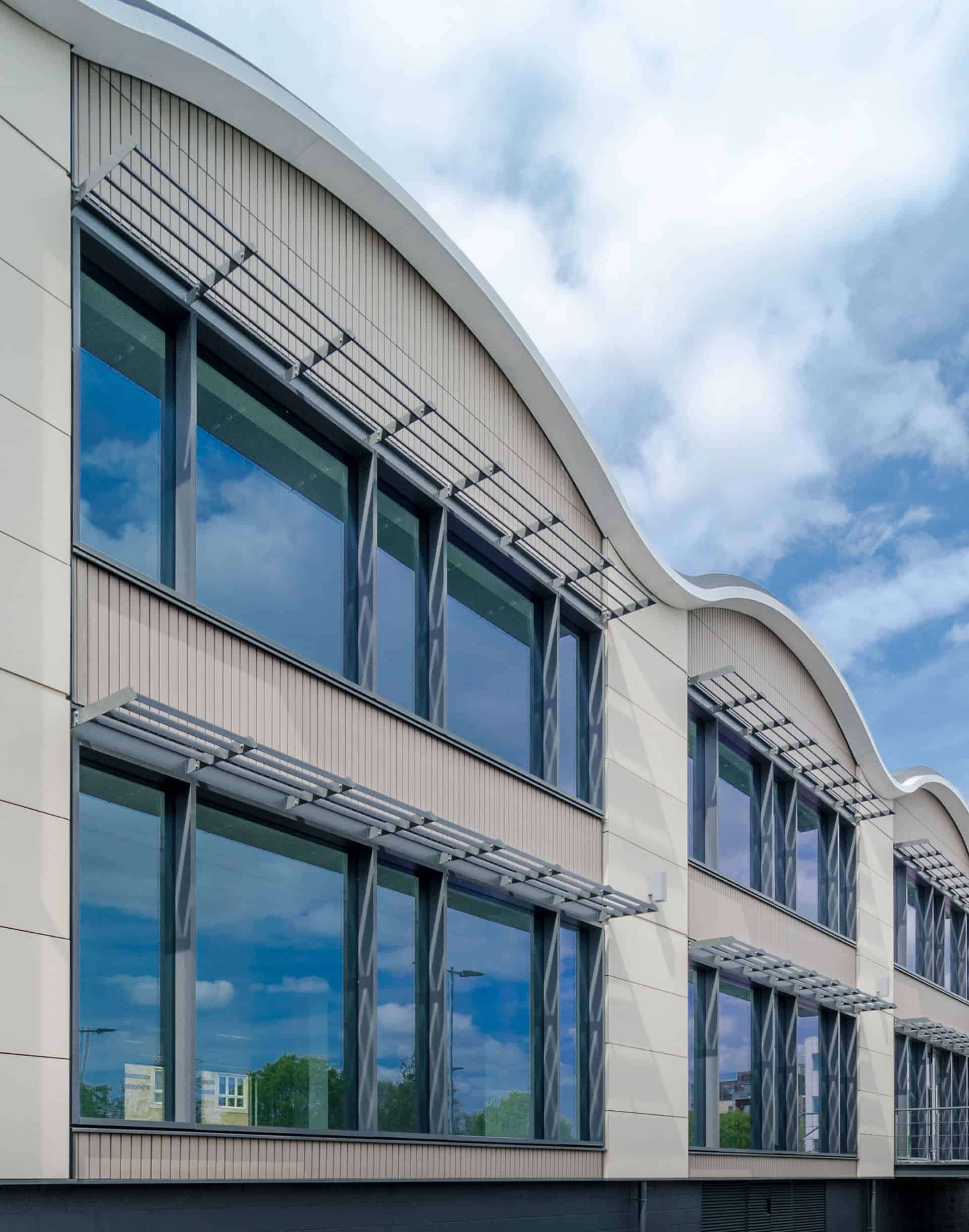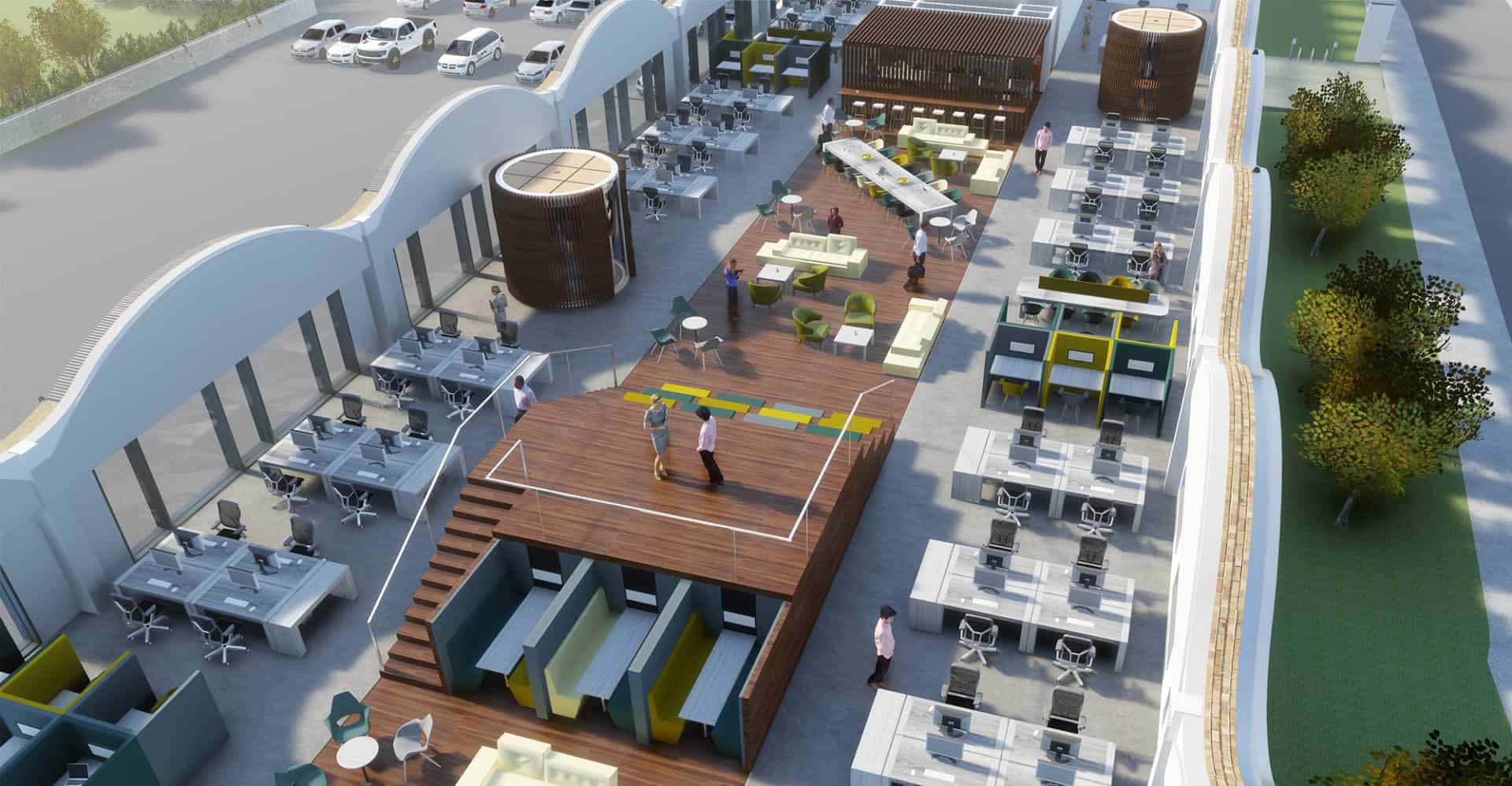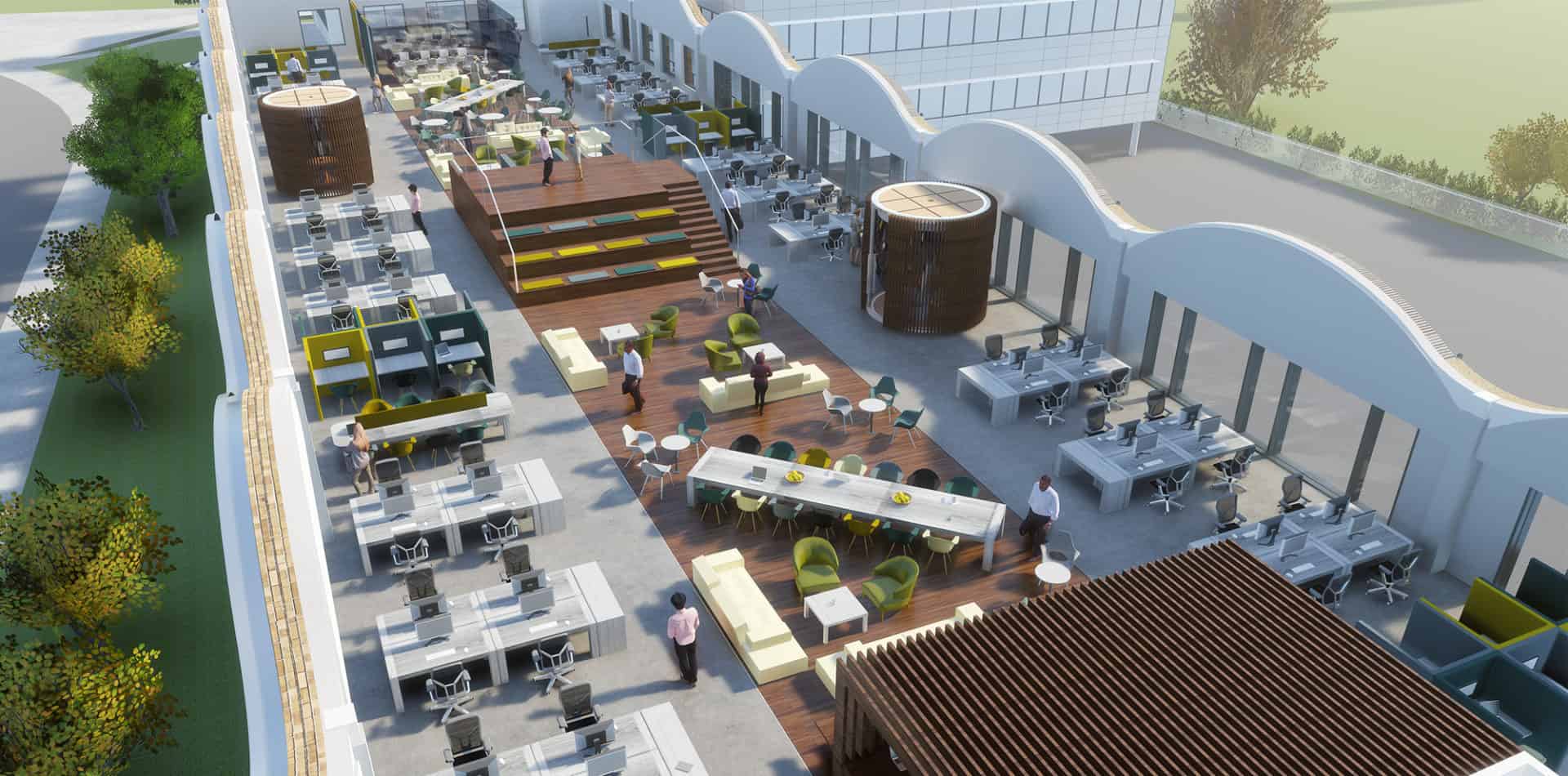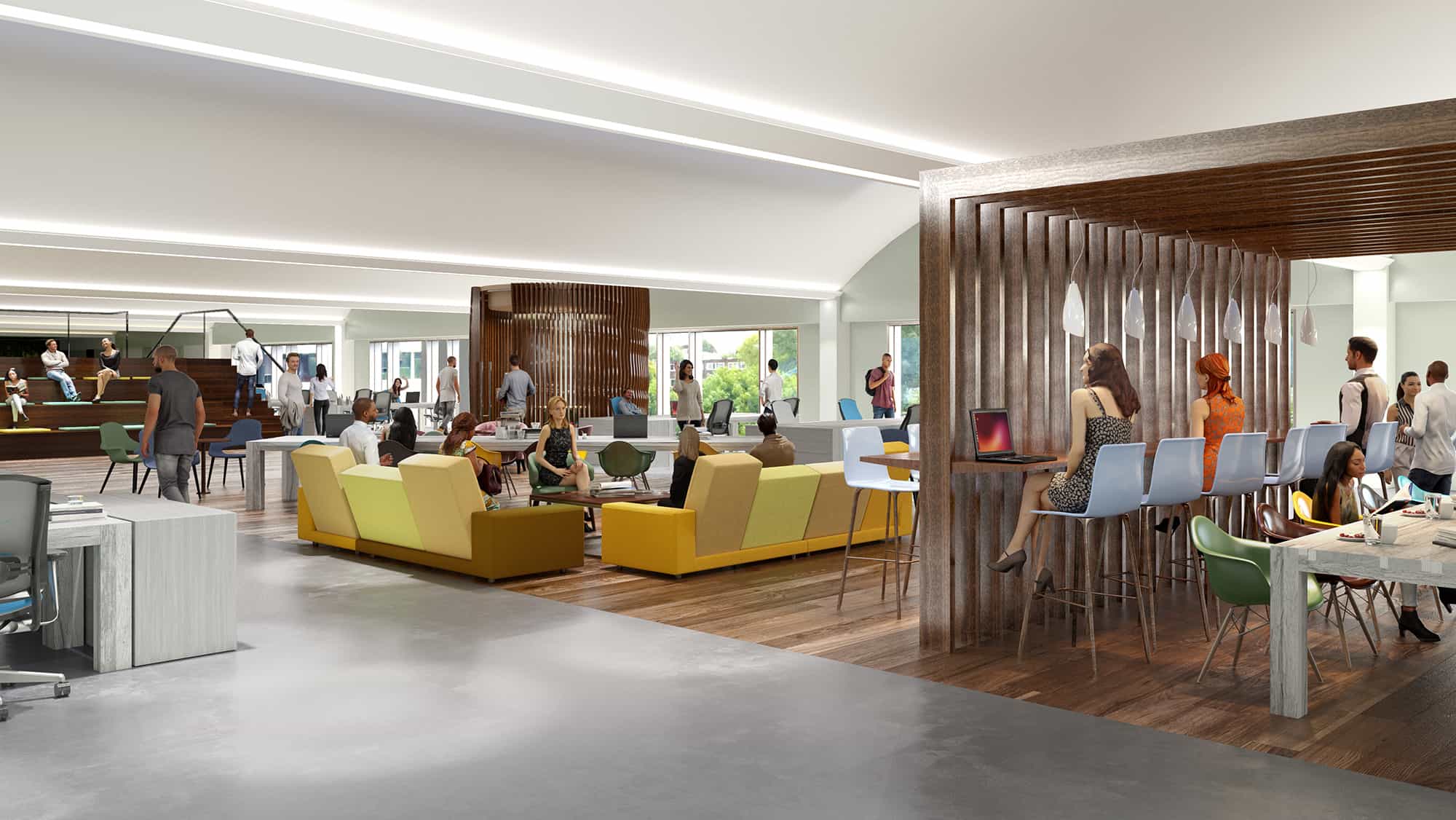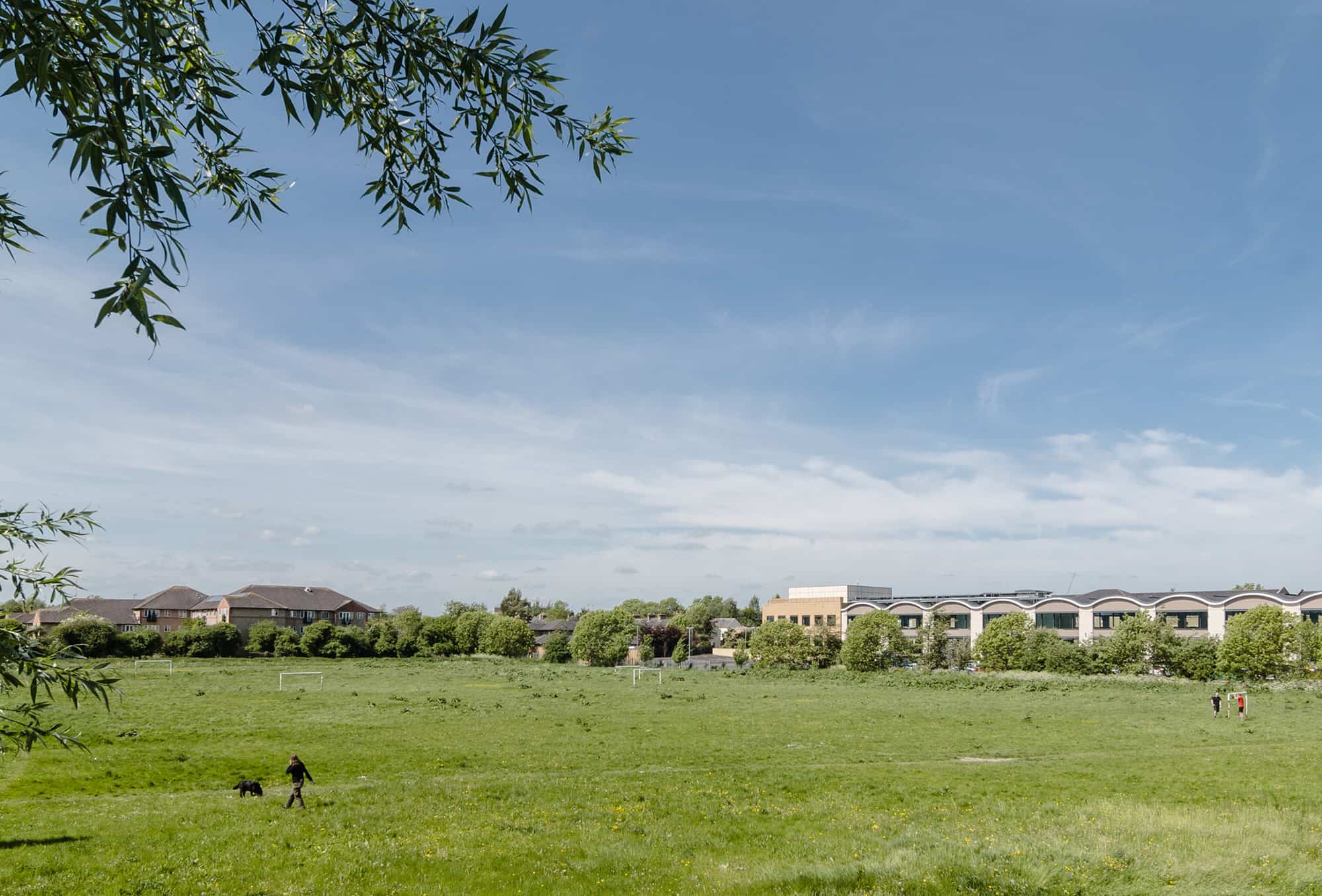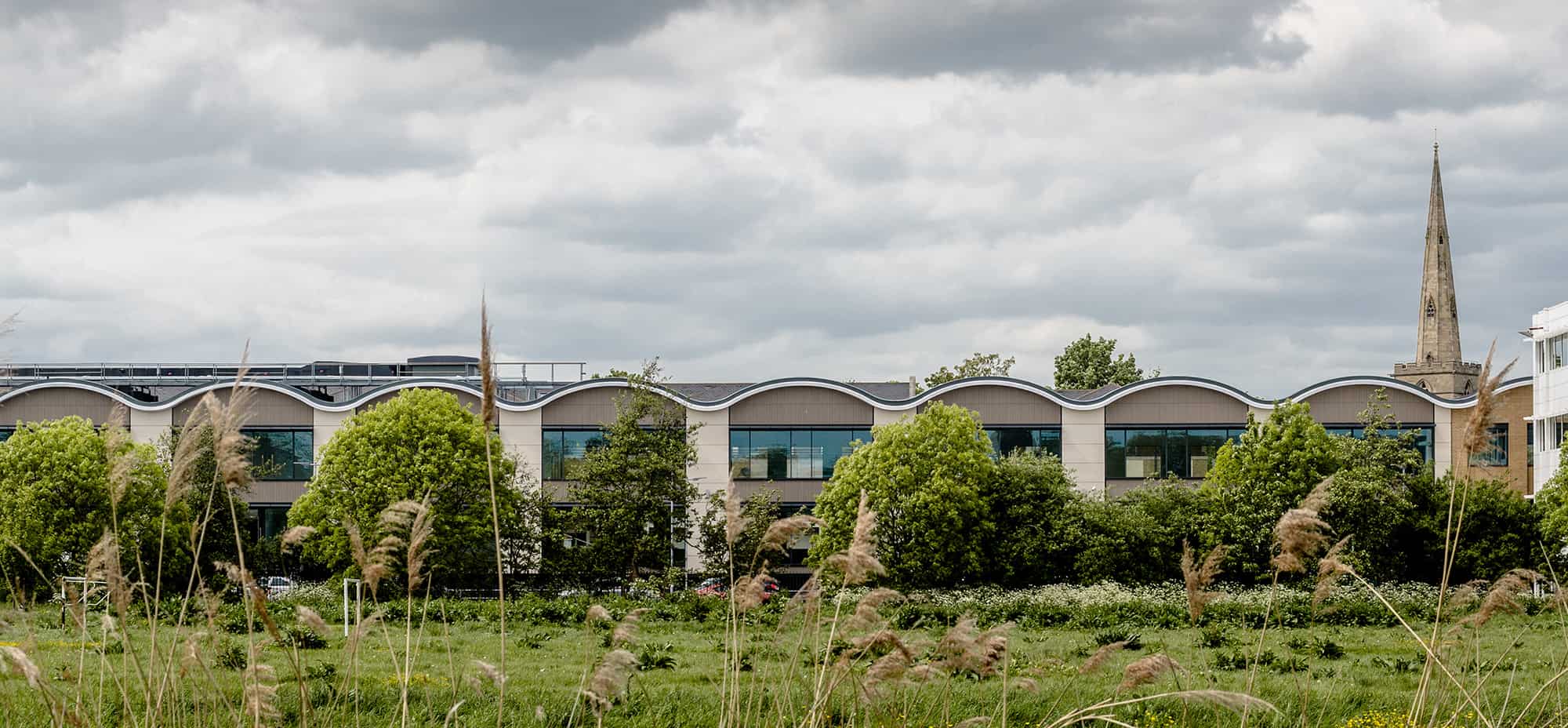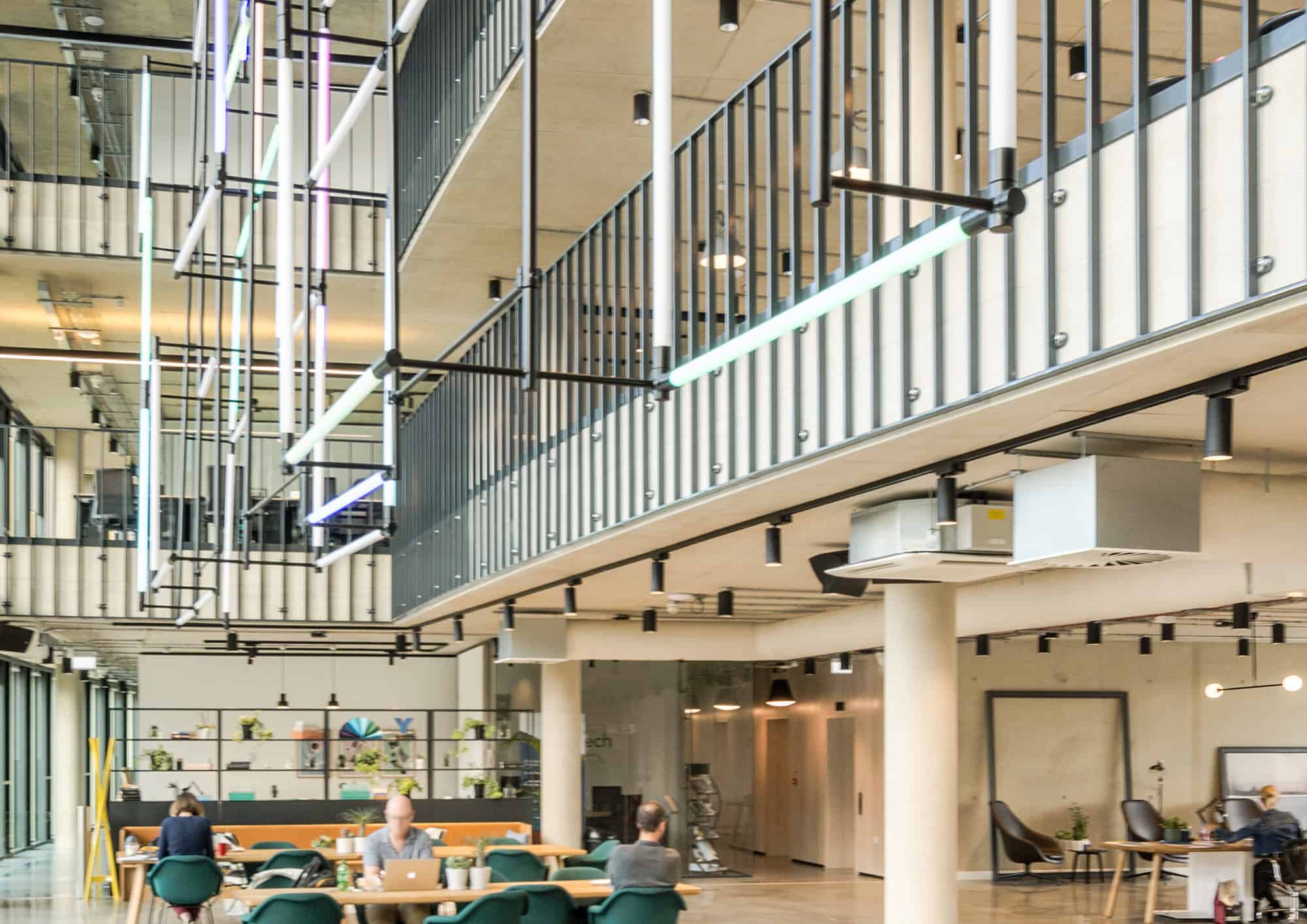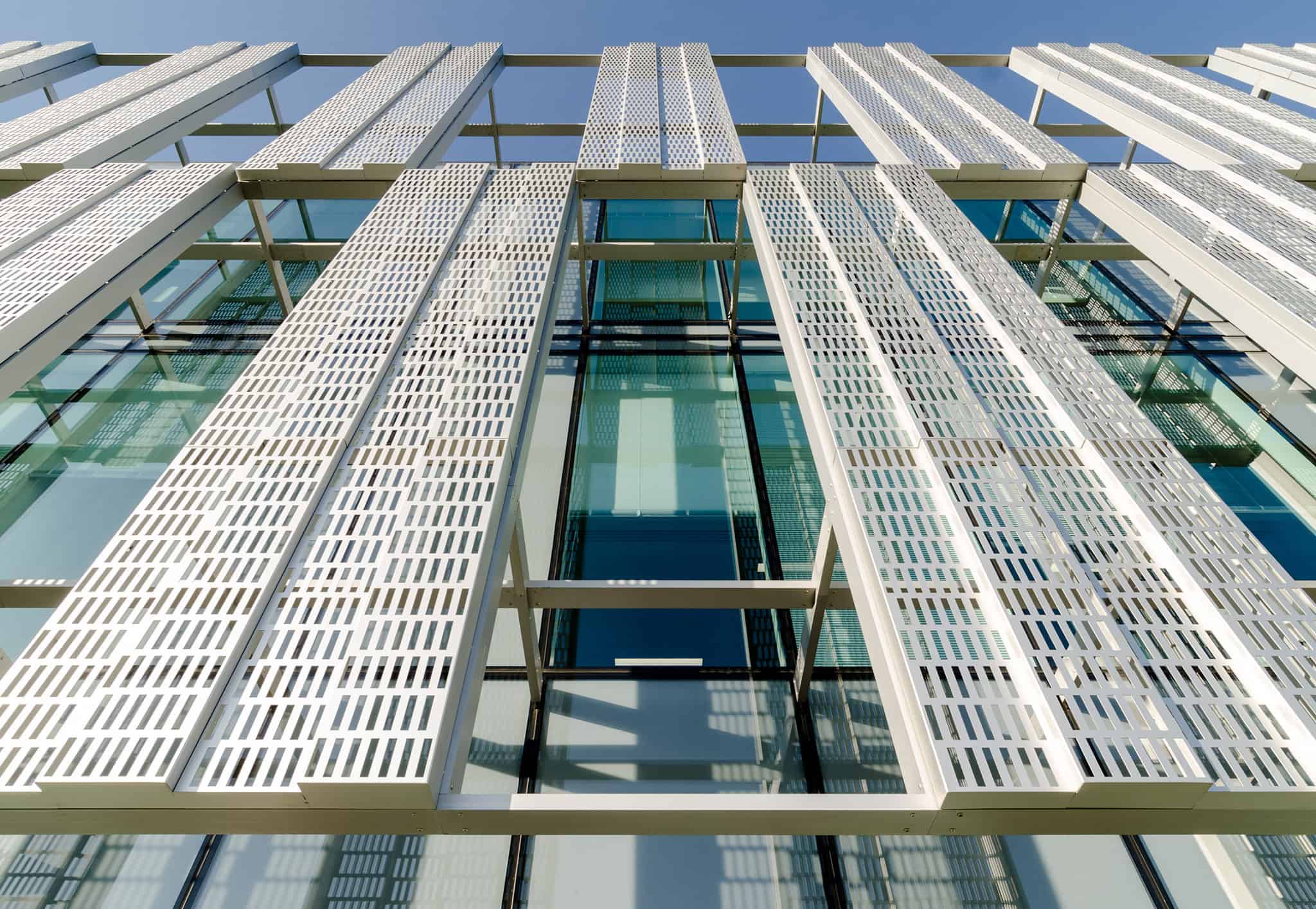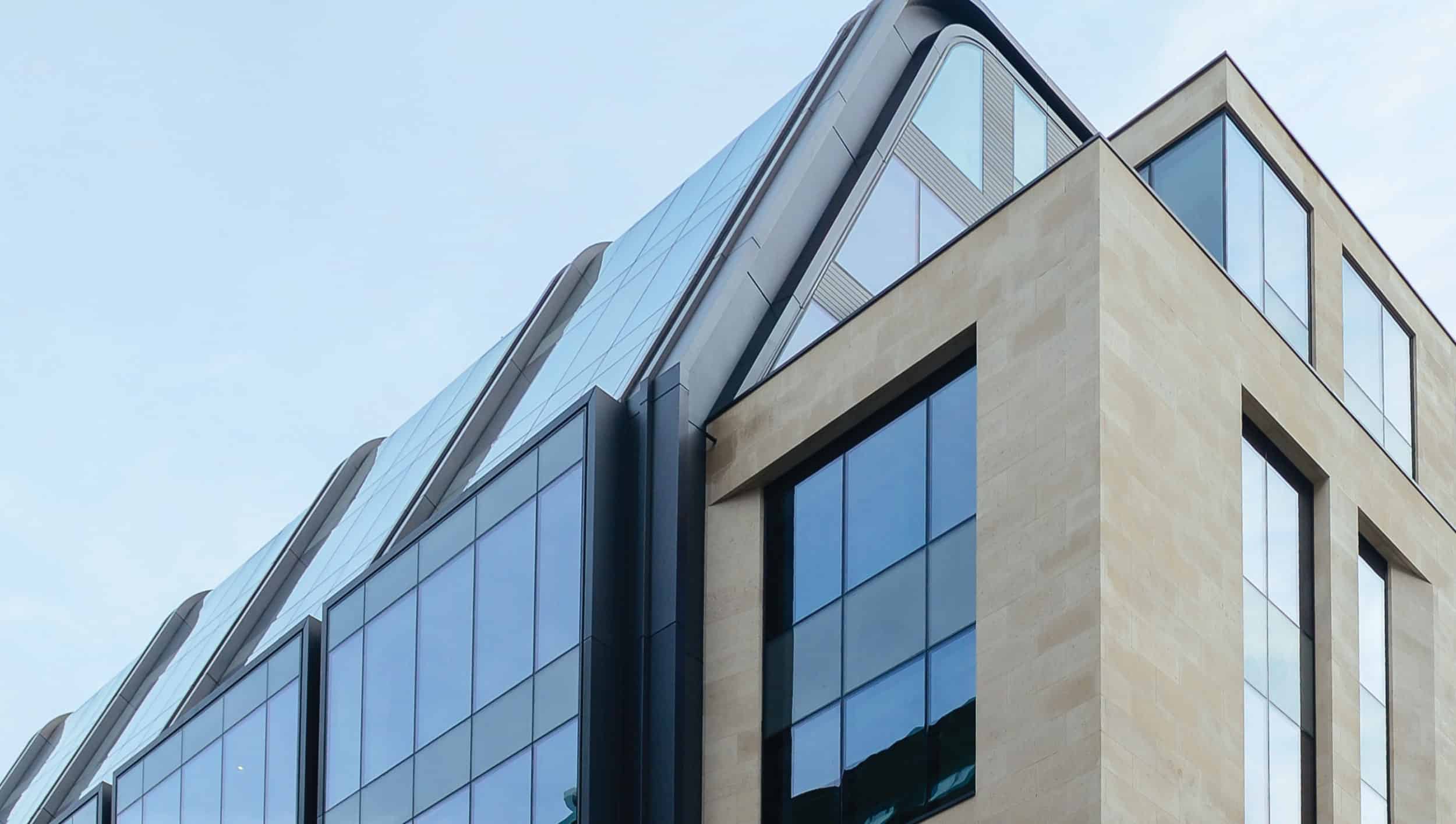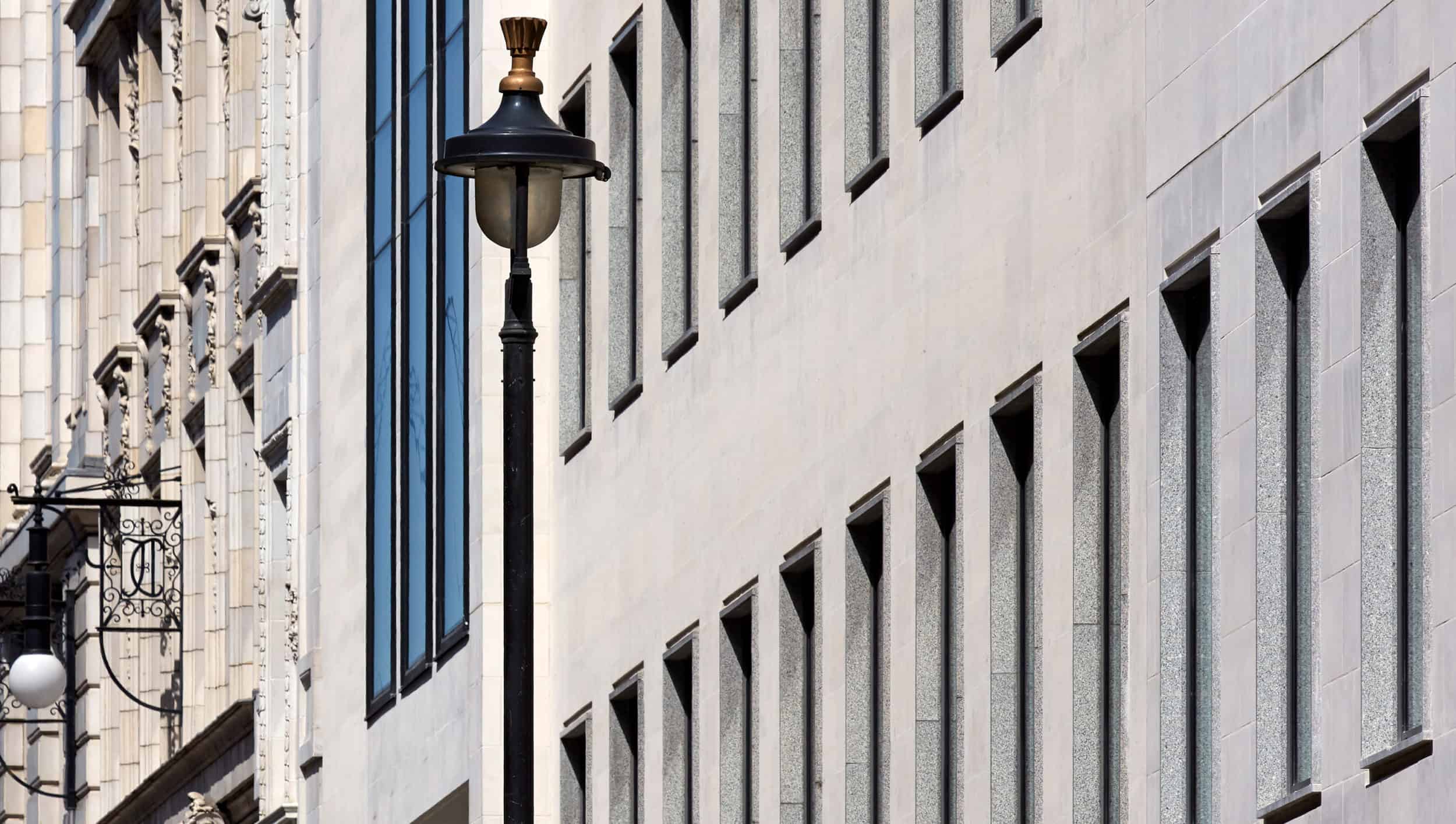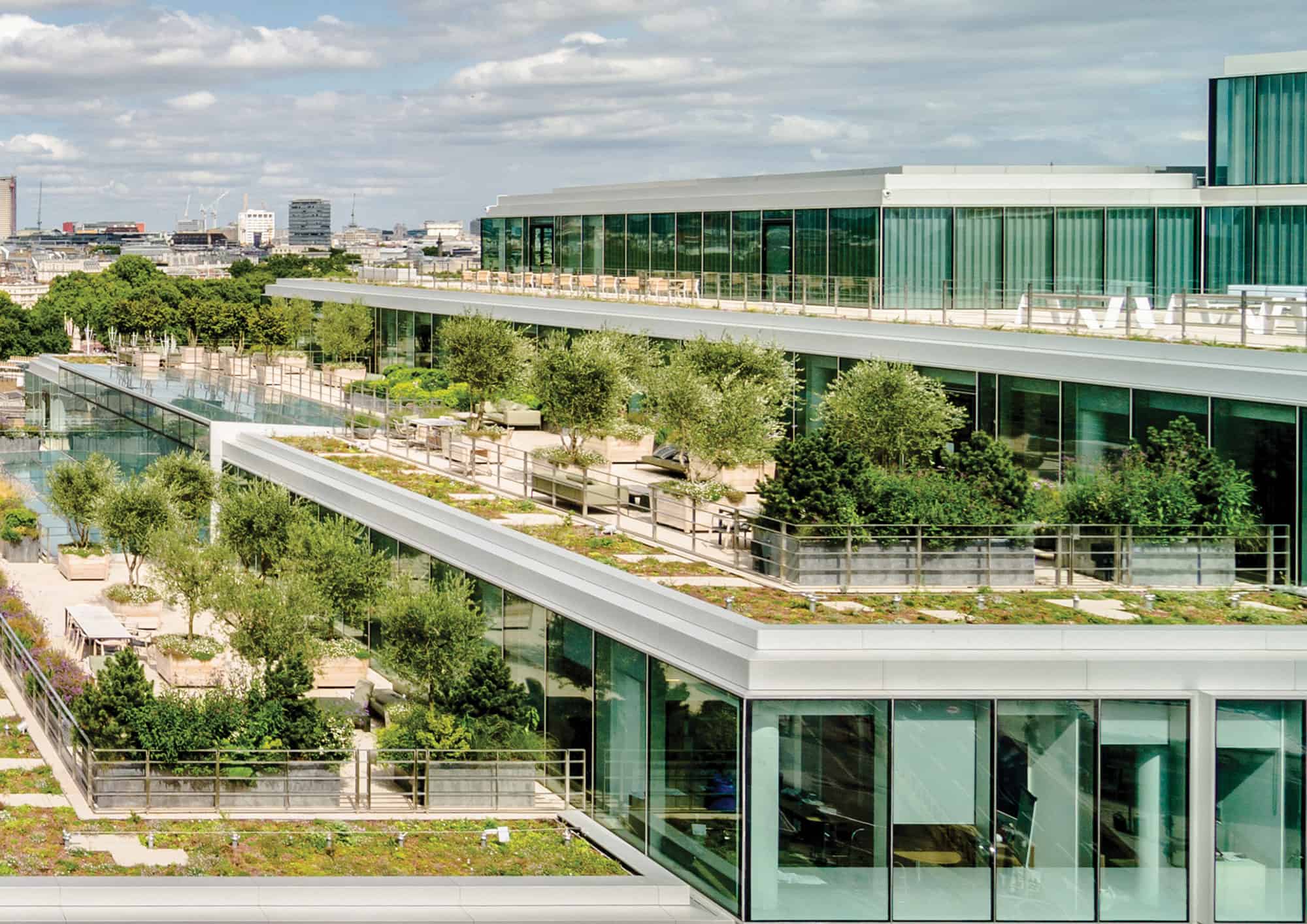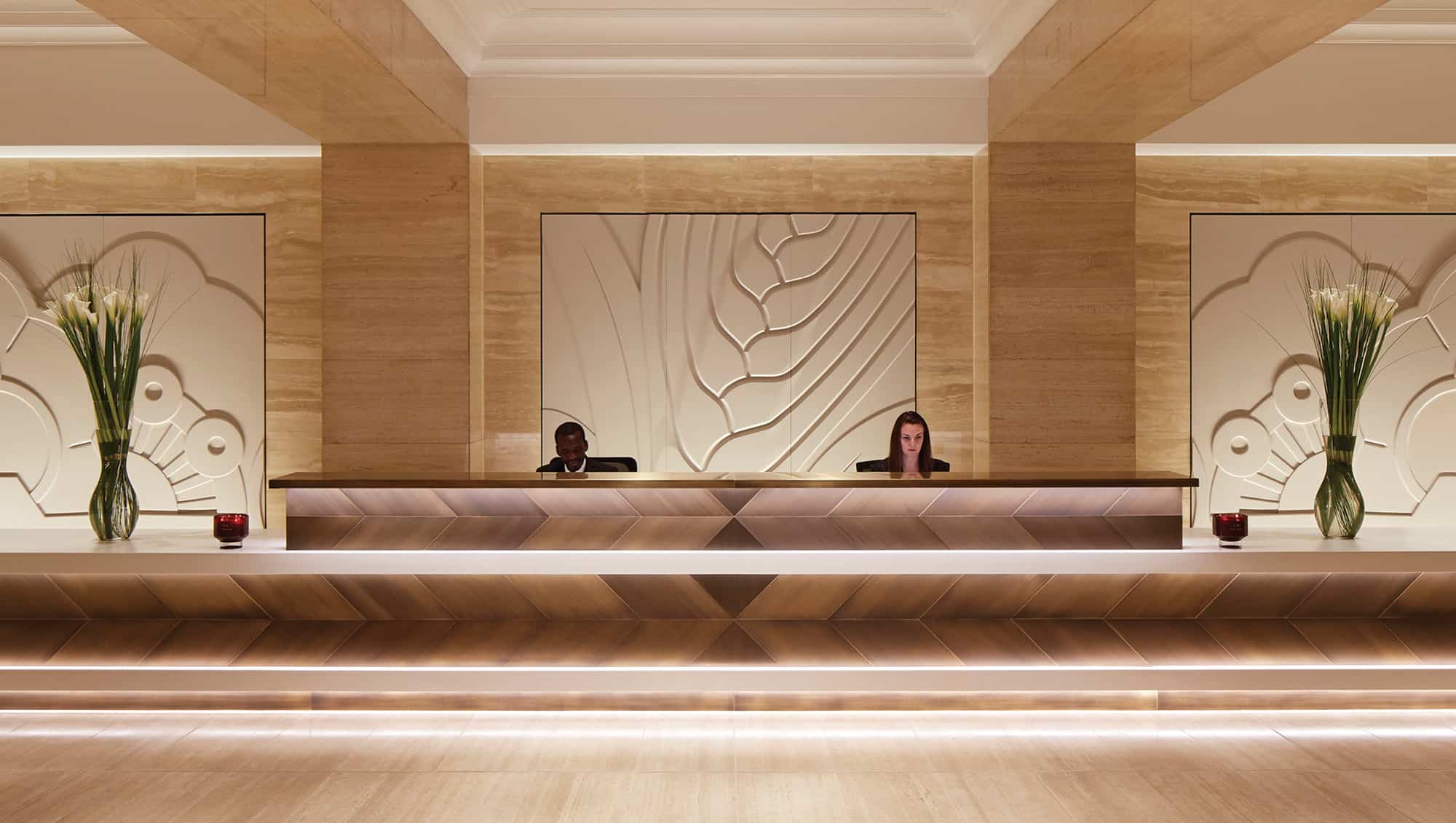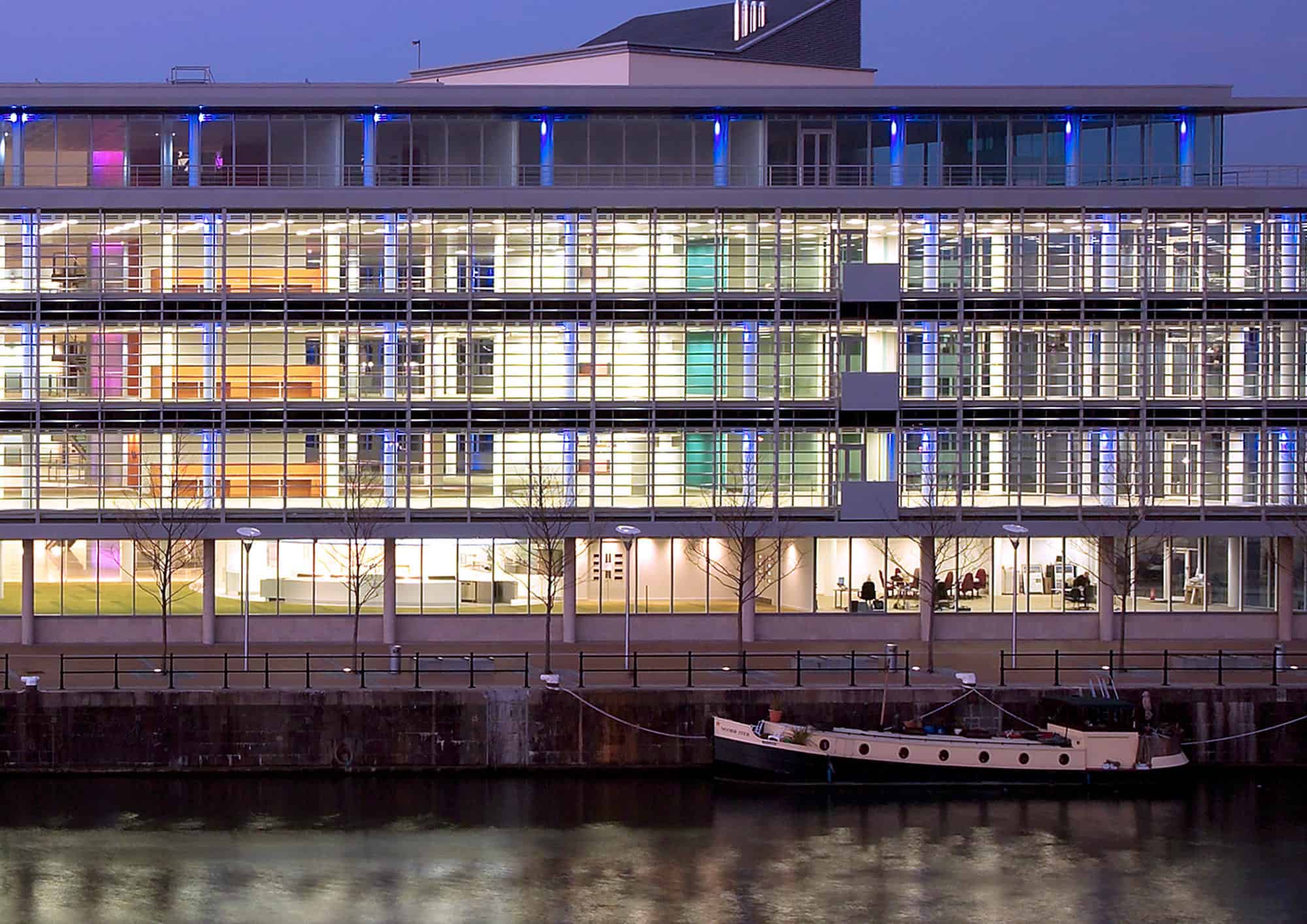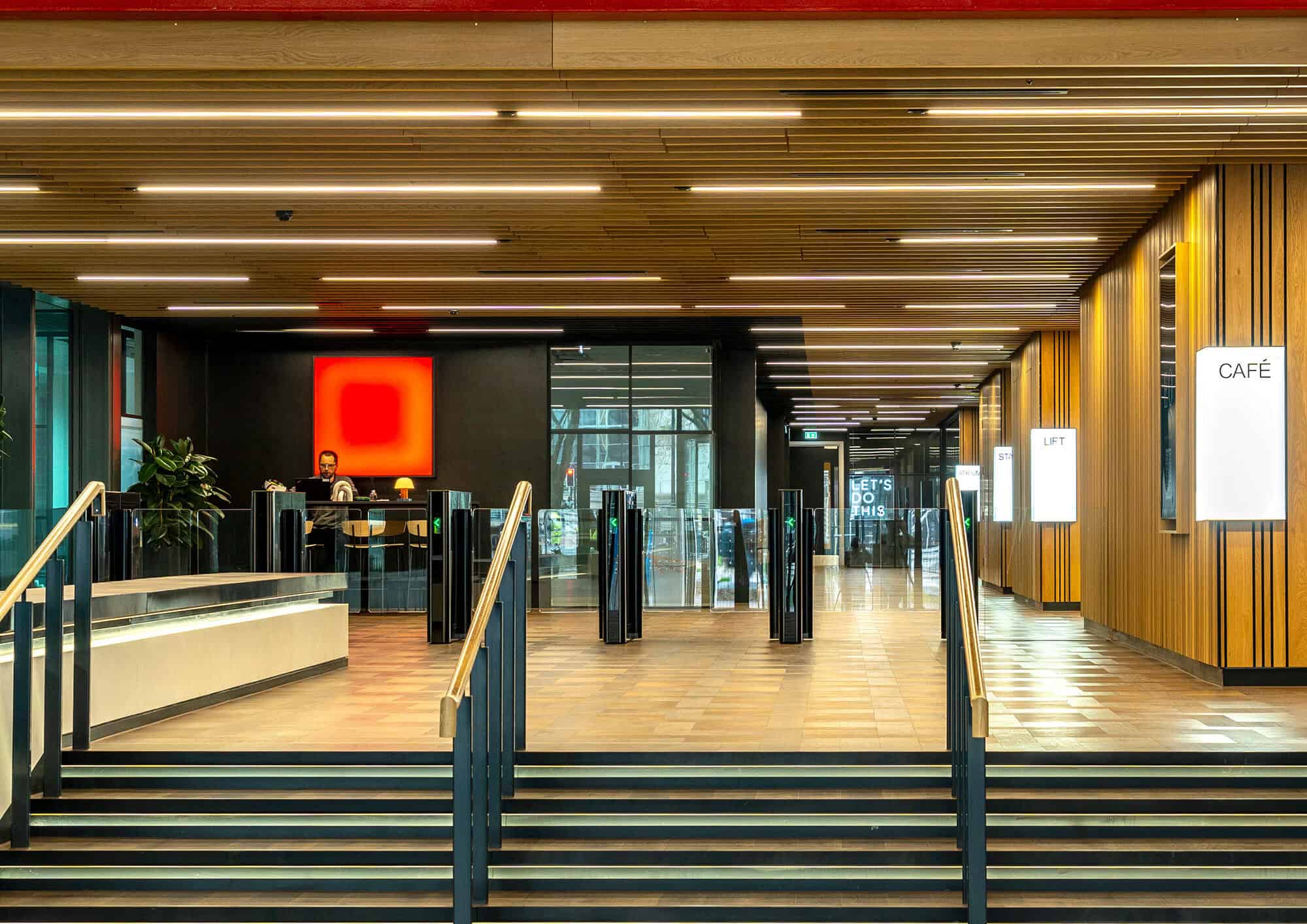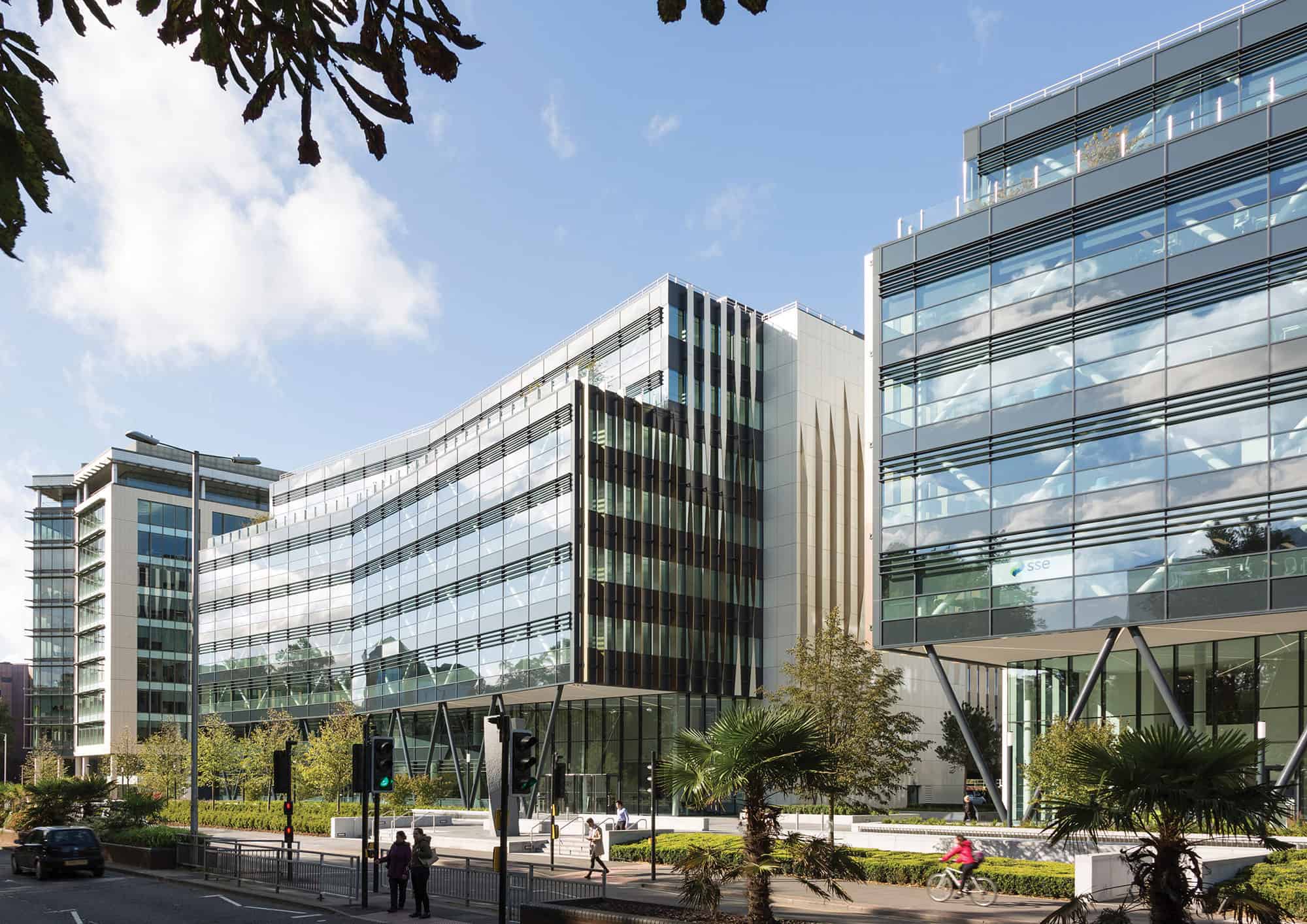Cambridge, UK
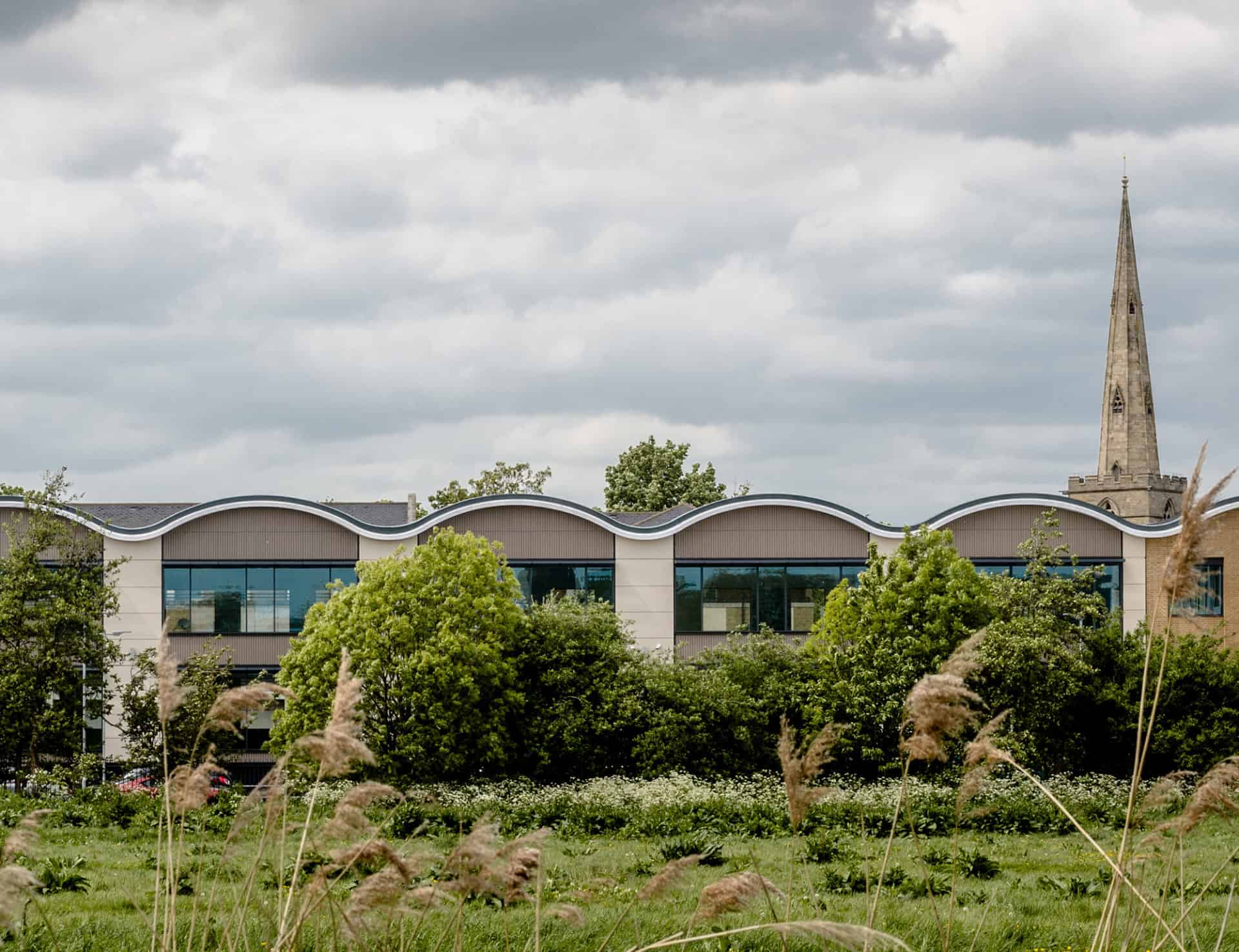
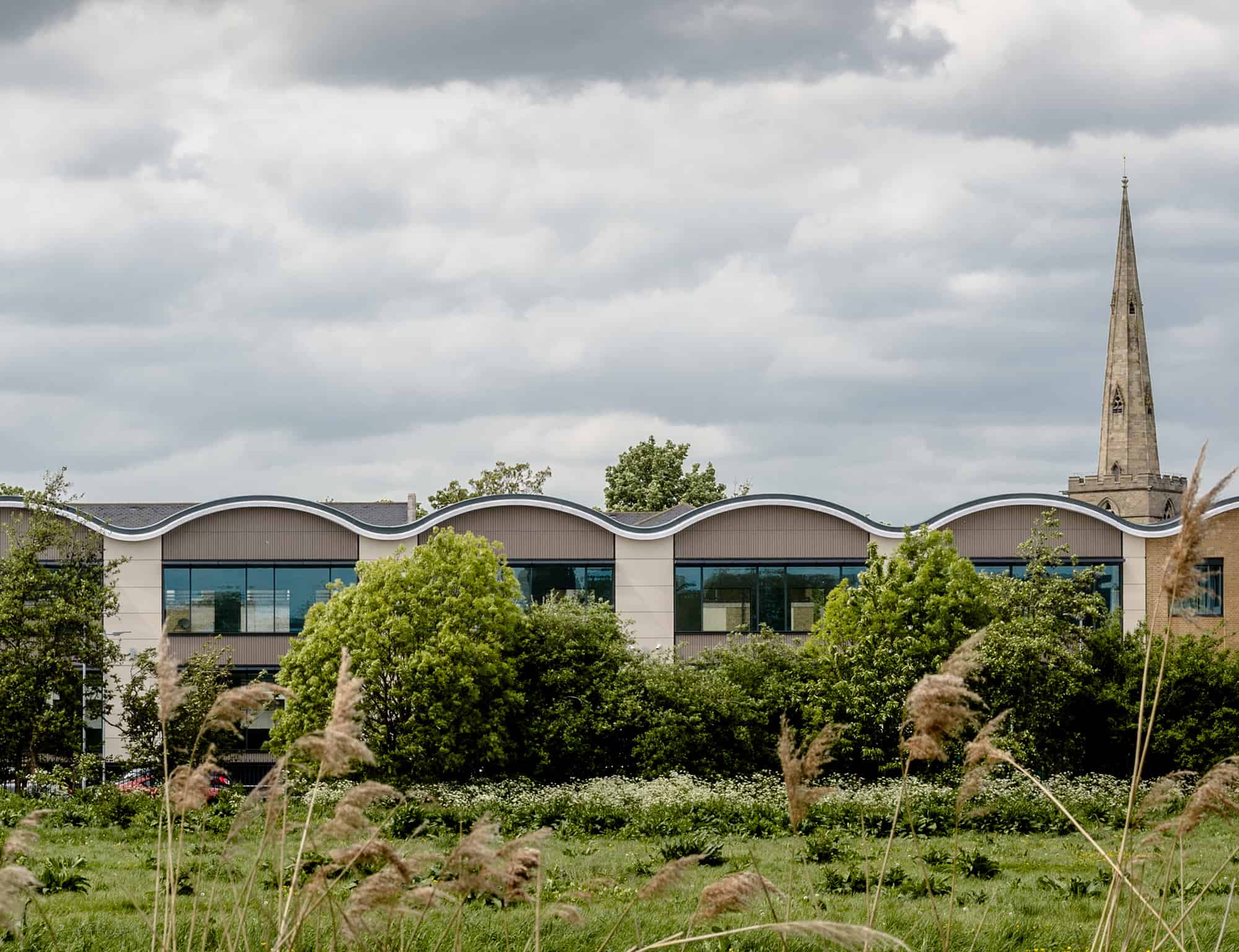
The refurbishment of Radio House has retained and rejuvenated the spectacular architectural qualities of an existing post war office building, the last remnant of the previously extensive Pye Radio Works factory in Chesterton, Cambridge
Project Details
Collective Team
Radio House is a two-storey post-war office and production building on St Andrew’s Road in Chesterton, to the north east of Cambridge and is the last remnant of the previously extensive Pye Radio Works industrial estate.
Known locally for its distinctive barrel-vaulted roof, our sympathetic refurbishment aimed to enhance its roof form and retain the building’s link to its industrial past through the continuation of B1 office use.
The refurbishment gives 43,388sqft of lettable office space, and reconfigures the internal circulation, reclads the façade, and opens up views of the River Cam across a protected open space to its rear, to fulfil the client’s aspiration to overhaul the building to attract an exemplar tenant.
The new entrance is a double height space highlighting the barrel vault roof with accommodation stair to the first floor. The finishes in this key space are polished concrete complemented by waxed steel panels to the lift shaft, a refined yet deliberately industrial aesthetic.
The interior layout has undergone a major refurbishment to bring the office floorplates up to modern BCO standards, including a new high spec central reception and core which bolster the building’s industrial details and includes excellent cycle storage and shower and locker facilities to achieve an “Excellent” BREEAM rating.
The office space offers large open floorplates with 19m width providing a balance between depth for fitout flexibility and efficiency, and open aspect for views out and daylight. On the first floor, the combined benefits of a clear span column free space, and the lofty drama of the barrel vault roof with soffit heights between 2.95 and 4.75m, provide a spectacular and unique office environment.
A consolidated central roof plant housed on the flat part of the roof allows for efficiency of equipment, improving the environmental credentials of the building and removing the need for the existing ad-hoc plant additions along its south east facade.
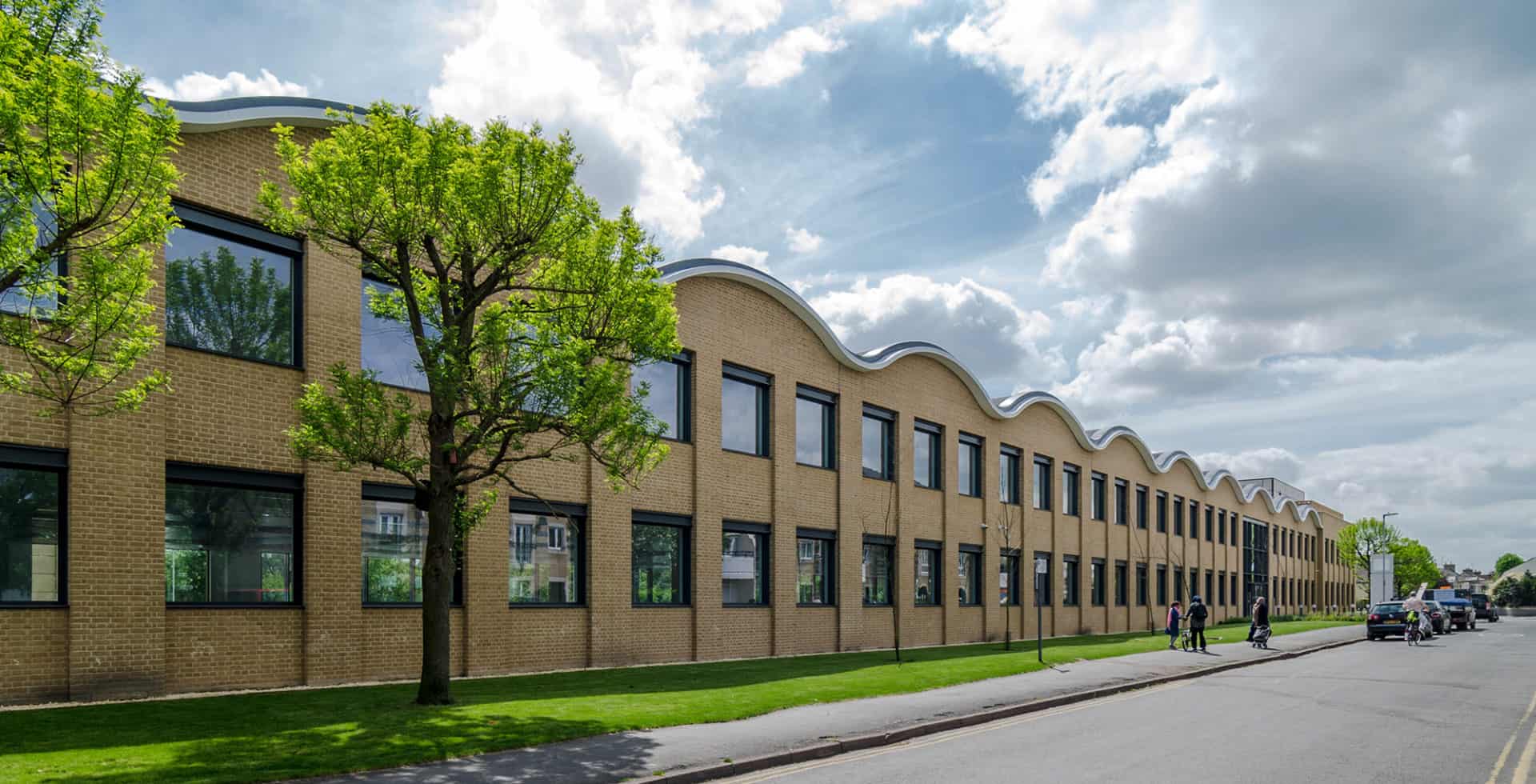 The existing building was noteworthy for its distinctive wave-form roof and this has been retained and accentuated by the proposals
The existing building was noteworthy for its distinctive wave-form roof and this has been retained and accentuated by the proposals
The building’s appearance was rejuvenated through the careful integration of terracotta and curtain walling on its south east facade, allowing natural light to filter into the internal space and enhance the visibility of the building’s unique barrel vault roof. Each structural bay has a large curtain walling window, with precast GRC piers between and terracotta baguettes to spandrels, and engages the occupants with expansive views over a protected open space meadow and the River Cam.
Along with brise soleil shading to the windows, the considered choice of materials lifts the character of the building and sets off the retained unique roofline. Buff traditional brickwork with industrial metal accents replaces the degraded existing brickwork on the remaining façade; material choices all sympathetic to the character of the conservation area and its industrial past.
With our broad experience of workplace design and our creation of exemplar workplaces, we are often approached by developers and investors to appraise the work of other architects from an occupier perspective during the base-build design process. We also collaborate regularly with our own architectural team on the design of our own buildings ‘from the inside out’.
Our work often includes test-fit planning and the analysis of floorplate efficiency and effectiveness plus the qualitative aspects of daylight ingress and grade A to C space, for example.
The images shown here were produced in support of our client’s marketing strategy for Radio House as a means by which to illustrate the quality and potential uses of the space.
This project embodies the many benefits of refurbishment, preserving and rejuvenating an important element of local Cambridge history with new life, fitness and flexibility for current and future office use
